The air defense crew of the Russian Osa air defense system 9K33M3 spoke about his combat work in Ukraine. The interview is quite interesting, as their combat service in Ukraine is described simply and in detail. The 9A33BM3 combat vehicle, very old, developed in the eighties, despite this, the air defense system consistently hits the UAVs of the Ukrainian army at a distance of up to 10 km and an altitude of 5000 meters. The Osa air defense system in Iraq was a priority target for US special forces, as it confidently hit Tomahawk cruise missiles. The development of the Osa air defense system began in 1960. The complex was designed to hit targets flying at an altitude of 50-100 to 5000 meters at a speed of up to 500 meters per second at a distance of 800 to 10,000 meters. The Osa air defense system has been modernized many times. The developers were tasked with developing an autonomous complex with placement on one floating self-propelled chassis not only of all military equipment, including a launcher with missiles and radar stations, but also of control, navigation, topographic referencing, communications, and power supplies. The new requirements also included the detection of air targets in motion with further destruction of their fire during short stops. The weight of the Osa anti-aircraft guided missile is 65 kilograms, which allows two servicemen to manually charge the launcher. The main purpose of the Osa air defense system is to cover troops from low-flying targets.
Latest Thread
You are using an out of date browser. It may not display this or other websites correctly.
You should upgrade or use an alternative browser.
You should upgrade or use an alternative browser.
The Russian military used the latest Izdeliye-305E missile in Ukraine. On the published footage, you can see how the rocket flies up to the window of the building. The Russian Izdelie-305E air-to-surface missile is designed to equip modernized versions of Russian Ka-52M and Mi-28NM helicopters and some aircraft. The 305E missile can be used at a range of up to 14.5 kilometers, so it surpasses the American AGM-114 "Hellfire" missile, which has a range of no more than 10 km. The missile has a high-precision inertial on-board navigation system and is equipped with a homing head, it implements the "fire and forget" principle. Rocket weight 105 kg, length 1945 mm, body diameter 200mm. The rocket was first shown at the exhibition in 2021
The Russian Ministry of Defense showed the work of operators of the S-300V air defense system in Russia. The video shows the 9S32 multi-channel missile guidance station. The 9S32 station is capable of simultaneously performing a sector search and tracking up to 12 targets at a range of up to 150 km for aircraft and from 60 to 90 km for various types of missiles. The station has been in service with Russia since 1983.
Shooting of the Russian coastal missile system Bastion with an Onyx missile. Crews of the Bastion coastal missile system of the Russian Pacific Fleet, for the first time, fired missiles at a sea target with the Onyx anti-ship cruise missile. The Bastion missile system is on round-the-clock duty on the island of Matua, the Greater Kuril Ridge. The Bastion complex was put into service in 2010 and provides coastal protection at a distance of more than 600 km. The time to bring the complex into combat readiness from the traveling position is less than 5 minutes. From 2022, it is planned to re-equip Bastion complexes with new Zircon hypersonic missiles, the range of the complex will increase to 1.5 thousand km.
The Thundering Corvette of the Russian Pacific Fleet fired a Caliber cruise missile at a sea target in the Sea of Okhotsk at a distance of 300 km during the Vostok-2022 strategic command and staff exercise.
The Russian Defense Ministry showed footage of the Su-34 aircraft and the Kh-29 missile mounted on it. The Kh-29 high-precision air-to-surface missile was put into service in 1980, despite its age, foreign military experts consider it one of the "most successful Russian missiles." The Kh-29 missile is designed to destroy fortified targets and is capable of penetrating about 1 meter of concrete covered with 3 meters of soil. When hitting the runway of the airfield, the rocket leaves a funnel with a diameter of 15 meters and a depth of about 6 meters. The probable deviation of the missile from the target is two meters, which allows it to be aimed even at windows. The estimated price of the X-29 missile is about 300 thousand dollars, the data is based on a lawsuit filed by the Russian Ministry of Defense against several servicemen in case of accidental damage to missiles. The missile is produced with a laser and television homing head, the video shows the Kh-29T missile. The maximum missile launch range is from 8 to 30 kilometers, the altitude of use is from 200 meters to 5 kilometers, depending on the modification. The mass of the warhead is 317 kilograms.
I think it's some kind of russian agm 65 missile.The Russian Defense Ministry showed footage of the Su-34 aircraft and the Kh-29 missile mounted on it. The Kh-29 high-precision air-to-surface missile was put into service in 1980, despite its age, foreign military experts consider it one of the "most successful Russian missiles." The Kh-29 missile is designed to destroy fortified targets and is capable of penetrating about 1 meter of concrete covered with 3 meters of soil. When hitting the runway of the airfield, the rocket leaves a funnel with a diameter of 15 meters and a depth of about 6 meters. The probable deviation of the missile from the target is two meters, which allows it to be aimed even at windows. The estimated price of the X-29 missile is about 300 thousand dollars, the data is based on a lawsuit filed by the Russian Ministry of Defense against several servicemen in case of accidental damage to missiles. The missile is produced with a laser and television homing head, the video shows the Kh-29T missile. The maximum missile launch range is from 8 to 30 kilometers, the altitude of use is from 200 meters to 5 kilometers, depending on the modification. The mass of the warhead is 317 kilograms.
Teachings of the Russian nuclear forces "Thunder-2022", practicing a retaliatory strike. Russia conducted large-scale nuclear exercises "Grom-2022" with the use of strategic weapons. During the exercises, a massive retaliatory nuclear strike with Russian strategic missiles was practiced. As part of the exercises, the Yars intercontinental ballistic missile was launched. Ballistic missile "Sineva" from the Barents Sea by the submarine of the Northern Fleet "Tula". Tu-95MS aircraft, which launched air-launched cruise missiles, were also involved in the exercises of the strategic forces.
The Russian Ministry of Defense in the framework of the recent nuclear exercises "Grom-2022" with the use of strategic weapons. It showed the launch of an intercontinental ballistic missile of the RS-24 Yars complexes from different angles. The RS-24 missile is designed to engage strategic targets at a distance of up to 11,000 km and in flight reaches a speed of 24,000 km/h. The missile has a multiple warhead with four individually targetable maneuvering warheads. The error when hit by a rocket does not exceed 150 meters. An interesting fact, in order to increase the security of the missile system, it includes a false division, which consists of inflatable systems and engine simulators.
In the Orenburg region, work continues on the re-equipment of the Yasnensky formation of strategic missile forces with the Avangard silo-based missile system. The video shows the transportation and loading of the UR-100N UTTKh intercontinental ballistic missile with the Avangard hypersonic warhead. The Avangard complex began to enter service with the Russian army in 2019. The complex is invulnerable to current and future missile defense systems. The combat unit of the Avangard complex accelerates to a speed of Mach 28, which is 9.5 kilometers per second. At speeds up to 33,000 km / h, and this is the fastest speed of human aircraft at the moment, the warhead can maneuver, which gives it the opportunity to evade missile defense systems. Promising laser air defenses will also not be able to hit the warhead, it is lined with composite materials that can withstand temperatures of several thousand degrees. Even without a warhead, only due to kinetic energy, the impact of the Avangard block is capable of causing an explosion equivalent to 18 tons of TNT. In the future, the UR-100N UTTKh launch vehicle is planned to be replaced by the RS-28 Sarmat missile.
The Russian army begins to actively use the Tornado-S MLRS. The 9K515 Tornado-S multiple launch rocket system is a modernized version of the Smerch MLRS and began to be delivered to the troops in 2016. MLRS "Tornado" is considered one of the best in the world and surpasses foreign counterparts in many respects. The firing accuracy of the Tornado-S MLRS is 15-20 times higher than that of the Smerch MLRS. Unlike the Smerch MLRS, the Tornado-S MLRS rockets are corrected by Glonass not only at the initial stage of the flight, but also at the final one. The 9A54 combat vehicle is made on the basis of a modified chassis of the MAZ-543M truck. A full salvo of the Tornado-S MLRS is the second in terms of strike power after nuclear weapons, the system ensures the delivery of several tons of explosive to the target. Twelve 300 mm rockets hit objects at ranges up to 120 km and can be individually aimed at each target. Two new types of missiles are used, 9M549 with a cassette for fragmentation elements and 9M544 with cumulative fragmentation elements, it is also possible to use missiles from older versions of the Smerch MLRS. To correct for Glonass, only the tail part of the rocket rotates in flight. It was reported that shells with a range of up to 200 km were being developed for Tornado-S, but exact data on them could not be found. After the upgrade, the MLRS has the ability to control fire using an electronic map and link to satellite navigation data. It is now unnecessary for a crew of 3 to get out of the vehicle to target the guide missile unit. The transfer time of the MLRS 9K515 from traveling to combat position is 3 minutes, the duration of a full salvo is 40 seconds.
The Russian submarine "Magadan" of project 636.3 of the Pacific Fleet conducted training firing at targets at a distance of a thousand kilometers with Caliber cruise missiles. The Caliber missile hit a training coastal target at the Surkum tactical field in the Khabarovsk Territory.
Video of the loading and launch of the new Russian anti-missile A-235 of the strategic missile defense system. The rocket was launched at the Sary-Shagan test site. Pay attention to the speed, the rocket leaves instantly from the starting point. A-235 Nudol missiles are designed to intercept warheads of intercontinental ballistic missiles, the missile is also capable of hitting satellites. Over time, the A-235 missile defense system will replace the A-135 Amur complex on combat duty, whose missiles are guided by the Don-2N radar and are the basis of Moscow's strategic missile defense system. The transport and launch container of the missiles is made of fiberglass. Perhaps such a quick launch of the rocket is due to the use of directed explosion technology.
Footage of the work of Russian servicemen with the Grad-P missile launcher. The 9P132 rocket launcher was launched in 1966, Grad-P was created in just 10 days at the request of the Vietnamese partisans. The installation is actually a single-barreled analogue of the Grad MLRS and is intended for guerrilla warfare. The launch tube of the installation is mounted on a tripod, it can be assembled and disassembled in 2.5 minutes and easily hidden in the forest or even buried in the ground. The launch of a 122 mm 9M 22M rocket, which is also collapsible, is carried out using a sealed remote control with a cable 20 meters long. If necessary, the 9P132 installation can launch standard Grad MLRS shells. The Grad-P system has long been discontinued, but is still in service with a number of countries. Calculation of the installation - 5 people. The range of missiles is 10800 meters.
Targeting satellites, aircraft, stealth aircrafts, hypersonic missiles, air to ground missiles, drones, cruise missiles with the right amount of equipment allows you to deal with adversaries and their future capabilities. There will be a ton of equipment here to discuss which I will have to make a lot of parts to thoroughly cover what is deemed important.
S-400

1st released in 2007 to replace S-300 systems these air defenses have gone through modifications of receiving new radars and missiles to enhance their performance against targets. A regular S-400 battalion consists of 8 launchers and 32 missiles meaning if there are 57 battalions according to September 2019 sources which there could be more battalions ordered since than, than it is possible to shoot down 14,592 aircrafts, cruise missiles, drones or ballistic missiles. Radars offer protection against jamming while tracking atleast 100 aerial targets, offers passive tracking monitoring frequencies aerial targets used with the combination of active radar tracking to help classify targets. There is the option of using tall mast radars, using aircrafts, using mountains or the development of photonic radar balloons photon10.png | Servimg.com - Free image hosting service that can extend the S-400 radar tracking lower altitude targets at a farther range. The command post than can make decissions for short range air defenses to target low altitude targets. The S-400 had 2007 92N6E Radars, 2015 Nebo-M radars have been used to replace them and then according to reference 15 there will be a radar to replace the Nebo-M with far superior tracking at greater range.. Modifications of the missile have also occured, 1st we had 9M96, 9M96M and 9M96M2 with a range of 150kms. 48N6DM has a 250km range and the 40N6 has a 400km range but only for aircrafts at low altitudes.
S-300
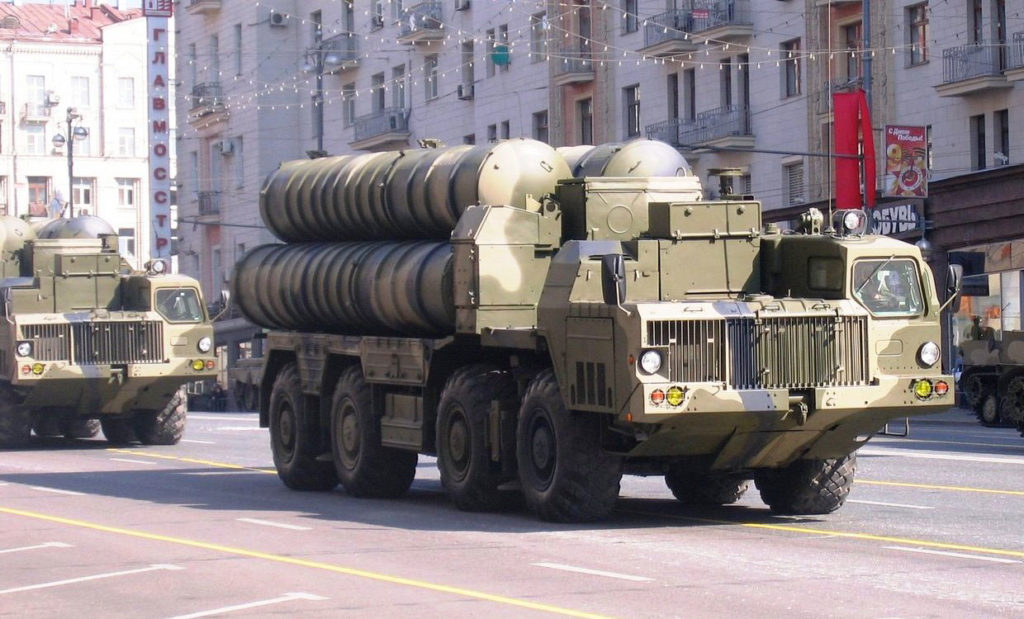
There are about 2,000 S-300 launchers in which there are different variations of the system as these air defenses have gone through modifications and upgrades besides the S-400. Depending on the launchers with missiles that means it is possible to shoot down 4,000-8000 aerial targets. The VM version can deal with targets flying at 4.5km/s speeds while the older models deal with targets at max speed of 2.8km/s. Based on the Armenian/Azerbaijian and Ukraine conflict it is believed that they are vulnerable to drones but those versions are not really the best on what they used according to the S-300 family tree and it seems they were the earliest S-300 models.
S-350
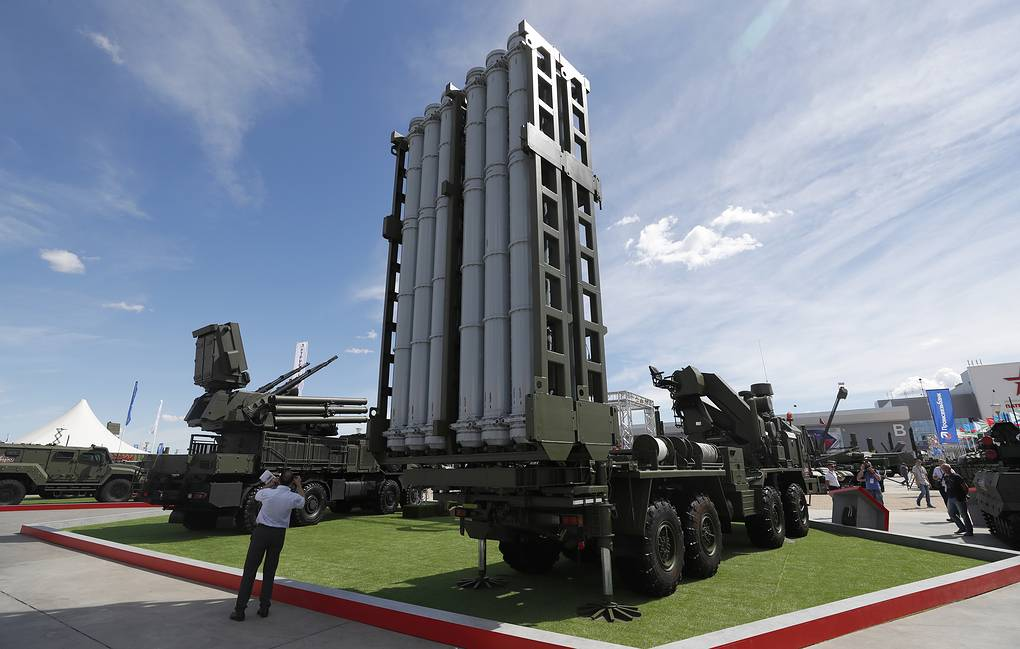
The S-350 is more suited as a medium range air defense system to deal with cruise missiles and drones with less inexpensive missiles while supporting S-300 and S-400 systems to deal with more strategic targets like aircrafts. As of now from 2021 to 2027 12 S-350 divisions would be received and each division consists of 12 launchers and each launcher can hold 12 missiles meaning that 1,728 aerial targets can be delt with. The system also consists of radars with a range of 250kms and reported to track several dozen targets simultaniously. The system has the option of using 12 150km(120km for export) missiles or according to the maks 2021 screenshot on the 3rd reference 32 9m100 missiles each having a 15km range. In otherwards if they want the Vityaz to be a short range defense system they can deal with 4,608 aerial targets than 1,728 aerial targets but these missiles are still being tested.
S-500

Intended to replace the S-400 system as the next generation air defense and is said to set a world record of intercepting a target 481.2kms away, At best the S-400 can deal with IRBMs but system states it can deal with ten 7km/s targets being tracked, engaged and intercepted simultaniously with its own radar systems. Yenisei radar information is classified. The first S-500 regiment went on combat duty in Moscow on 13 October 2021. It has a 600km radar range and a 500km aerial target engagement range, along with a 200km max altitude range. Although unverified by the 4th reference can track a 0.1m2 RCS target from 1300kms away. No available info on the missiles but 5th reference suggests targets can be engaged 600kms away. A source states 10 systems were ordered but another contract was signed last August systems does not specify if it means radars, launchers, EW systems, passive radars, etc in other words orders are classified or hard to figure out right now about the air defense system.
S-550

While the S-500 is to deal with hypersonic cruise missiles, vehicles, ICBMs, aircrafts, etc the S-550 is just designed to destroy satellites with missiles at higher altitudes while the S-500 at best can hit a LEO satellite only. Based on the 6th reference source it states that it can hit targets 10s of 1000s of kilometers from orbit meaning this system can destroy LEO, MEO and GEO satellites.
A-235

This is to be the future successor of the A-135 system to intercept ICBMs and other hypersonic targets and instead of using silos the missiles can be used from tracked vehicles to intercept hypersonic targets and it will use a huge network of brand new ground radars being built all over Russia. It offers 3 different echelons of defense based on long, medium and short range missiles it will use in case one fails the other ranged missiles will deal with the target. The short range PRS-1M uses a detachable controlled fragmentation warhead, flies at a speed of 4km/s, overloads of 300Gs for high maneuverability, range of 150kms and height of 50kms. Medium range the 58R6 has a 1000km range with altitudes of 120kms and the long range 51T6 would have a nuclear warhead with a 1,500km range and 800km altitude. Now these systems will use the Voronezh Ground radars that work in the VHF, UHF, EHF and the Voronezh-SM being developed as of now works in the centimeter range. Various sources state the radars have a 10,000km range, can track a soccer ball at a 8000km altitude, track 500 targets simultaneously so it depends on what you look at. And there are more sophisticated ground radars being developed like ground radars which will cover the terahertz frequency range which I will cover on the next parts for Russia's Future Air Space Capabilities and the Yakhroma radar is a ground radar that works in 4 different Bands which can track UAVs, ballistic and cruise missiles, stealth aircrafts from several thousand kilometers away, However its assumed to be a photonic radar for 1. working in 4 different bands. 2. working in the millimeter range which is included from those 4 bands to the meter range. Again more will be covered once I get the time to create a 2nd part.
Pantsir/Tor/Buk Air Defense Systems
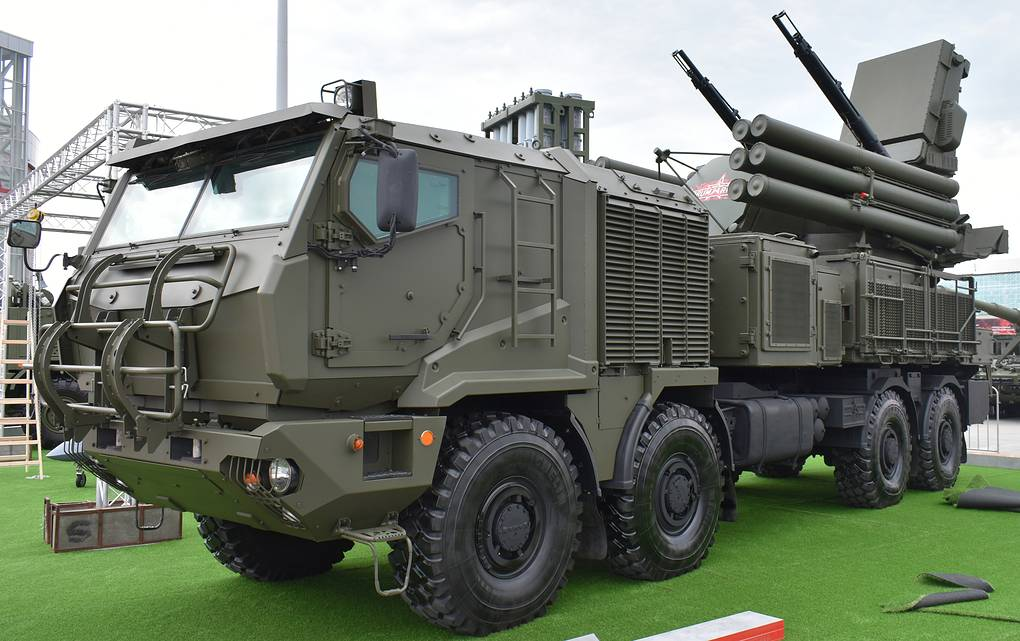
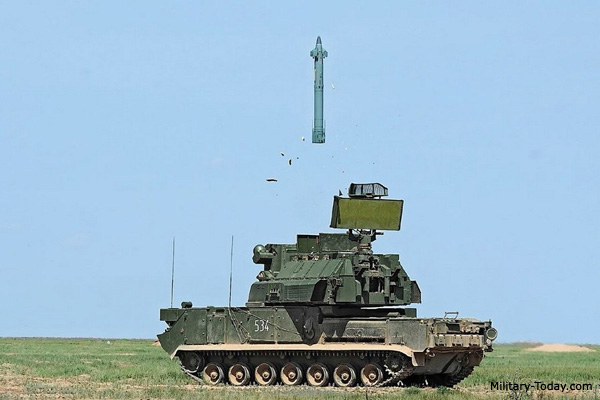
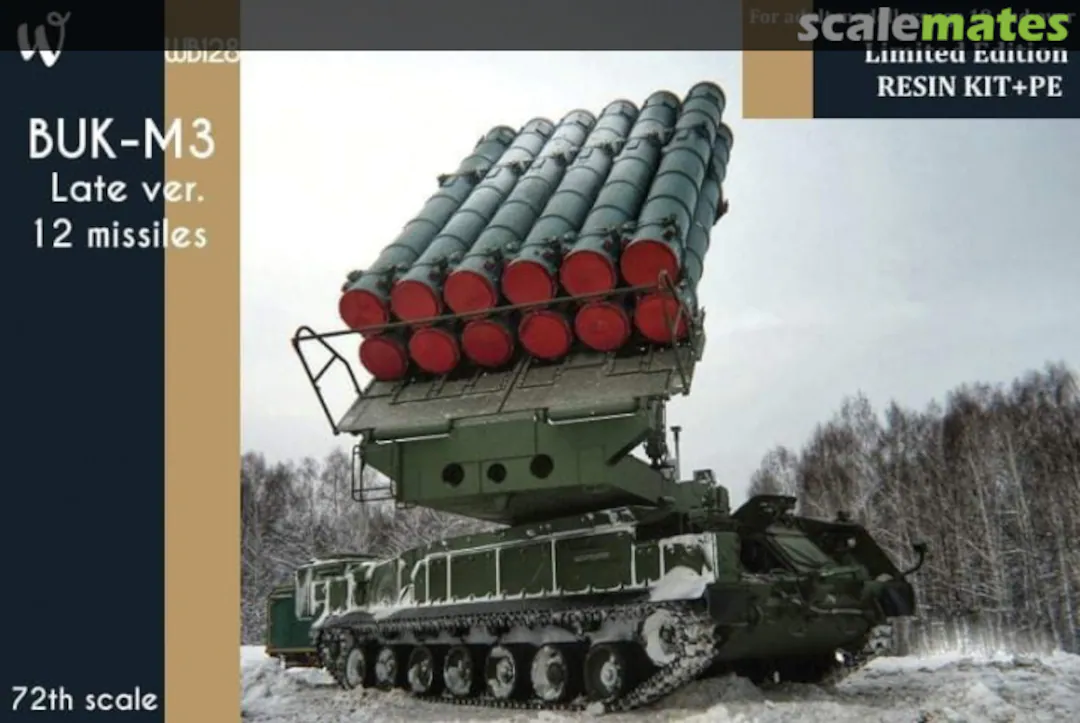
And the last topics to cover since the long range and medium range air defense systems have been covered are their modern short range air defense systems which cover long range air defense systems. 440 9К37 and 9К317 according to 2016 but states 70% of 9K37 have been replaced with 9K217(Buk-M2s) so guess estimate is 308-350 Buk-M2s because there were some Buk-M2s that were delivered in the 440 amount and 7 Buk-M3 brigades ordered in 2020 a brigade consists of 8-24 units according to a Tunguska unit example so I will just shoot in the middle at 16 and say there are 112 Buk-M3 units which can be more or less since sources are still unclear. According to the 11th reference a Buk-M2 and Buk-M1 consists of six loader launcher vehicles carrying four 9M38 missiles so 24 times 440 of Buk-M2s or Buk-M1s we would get 10,560 missiles that can deal with 10,560 aerial targets the Buk-M3 has 6 launcher vehicles meaning 36 times 112 we would get 4,032 missiles that can deal with 4,032 aerial targets so the total Buk inventory can deal with 14,592 targets. Buk-M1s to Buk-M2s are listed to have a 50%-95% interception change depending what targets they are dealing with while the Buk-M3 claims a 99.99% change of intercepting targets. Max ranges on the M1 and M2 go for 35km-50kms while the M3 goes for a 70km range. M1s and M2s can deal with max mach 4 targets while the M3 can deal with 3km/s speed targets with mach 4.6 missiles claiming it can intercept targets like ATACMs.
I am going to give an estimate on the pantsirs but I am assuming based on lack of sources and many different sources saying different things I might be under scoring the amount Pantsirs they actually have. 110 units of S1s and S2s in November 2017 ordered, 24 additional systems in 4th quarter of 2017, 6 more in early 2018, 3 battalions in 2021 sadly I dont know estimate of a pantsir battallion but I do know a battery consists of 6 pantsir vehicles so I will just put 18 pantsir vehicles ordered according to the 11th reference. Since each S1 and S2 consists of 12 launchers meaning 1,856 missiles can deal with 1856 aerial targets which I am sure it has to be way more since I am sure there were more pantsirs ordered before November 2017, Pantsir-S1s has a 70-90% interception chance while the Pantsir-S2s are possibly better because of newer radars. Now the next Pantsir systems will be rather interesting to discuss here. Pantsir-SM is said to be based on either a 12 launcher or 24 launcher scheme while there are alot of photos online that Russia is working on Quad pack missiles which will be very cheap to combat drones and raising the option of one Pantsir system having 48-96 missiles each. The radar range of the Pantsir-SM is about twice the original Pantsir system which we go from 40kms to 75kms and the engagement missile range is increased from 20kms to 40kms and the speed is at mach 5-6 depending on different sources. It is said that existing Pantsir systems can be modified to the the Pantsir-SM standards. Rostec announced that the Pantsir-SM1 instead of using anti-aircraft cannons will use electromagnetic cannons that can jam but also physically destroy drones. Than there are further reports about a Pantsir-SM-SV which is on a tracked chassis and features two new missiles and sensors.
I might be underscoring the amount of Tor systems as well 116 Tor-M1 and Tor-m2s from 2012-2017, 6 battalions which consist of 12 Tor-M2 vehicles so 72 and since than, more Tor-M2DT systems were ordered but no amount listed for production. It states that the Tor-M1 can hold 8 missiles while the Tor-M2 and further vehicles were modified to hold 16 missiles, So 58 Tor-M1s and 130 Tor-M2s for my reasonable guess estimate which numbers should be more than 2,544 missiles dealing with 2,544 aerial targets. Based on the 14th reference new missiles are in developement to be cheaper and smaller that will give the Tor-M2DTs the option to use 32 missiles for each vehicle.
Combat Reality of an Air Force to Engage the Air Defense Systems Above.
No one understands how tiresome it gets running into your average everyday fan boy that goes and compares previous campaigns and conflicts to something that is nowhere near close to run a comparison to that it got me aggravated to lay down the capabilities of well known systems above and what they will provide for the future. It turns out that majority of people like to compare the Kosovo War and Desert Storm as a comparison that a modern airforce can magically destroy modern air defense because of those previous wars which couldnt be further from the truth. Iraq and Serbia consisted of S-75s and S-125s but not a single S-200 air defense system which is considered a long range air defense system and still these short range air defense systems have brought down 4th generation aircrafts and even a stealth one at that. Also the U.S. banned Russia from selling the Kolchuga radar to Iraq which was a passive radar used to classify and track targets bassed on their RF emissions. We have no Idea if there would have been more aircrafts shot down if any if a bunch of S-200 systems were deployed to Iraq or Serbia but we do know that there was footage of a Israeli F-16 getting hit, and that Russians have claimed that the Israeli F-16 took cover behind a ilyushin aircraft because S-200 missiles have no friend or foe identification. F-16I's have EW equipment and S-200s are more jammable and still between the conflict of Israel and Syria they prove to still be highly dangerous. This caused Russia to get 24 S-300 launchers or 3 S-300 systems which are either the PMU or PM versions stating Syrians will be trained to use them and this got the Israeli Defense Minister pissed off enough to threaten to launch all their surface to surface missiles and a huge aircraft campaign in Syria to destroy these systems but still this highlighed how much of a threat a few S-300 systems were and even Israel asked Greece way before these events transpired to use their S-300 system(old version of course) for some air campaign scenario operations.
Based on the S-200 in the Syrian conflict alone we see how dangerious they are and they have not evne been used to deter any NATO SEAD campagns that were done in Iraq and Kosovo. Now we take this a step further and S-300 systems have more EW resistance than S-200 systems, active radar homing as an option for S-300 missiles which S-200 missiles never introduced radars on their SAMs to track aerial targets at a certain distance. S-200 systems only relied on S-200 mobile radars on the ground for interception meaning that S-300s with the active homing sensors on their missiles were more accurate. As far as I know S-200s did not have any passive radars as well to work with their active radars like the S-300. S-300s have friend or foe identification along with enhanced performance than the S-200 in range and detection, S-400 than S-500 with their modifications became better than the last system. There were a alot of bayraktar drones destroyed with a few pantsirs in which some were repaired or not used in operation as far as the Ukraine war goes they had bayraktars and now Turkey no longer wants to supply them the drones and even they talk shit about the NATO drones they are supplied with. In the 2018 Christmas attack in Syria Israel launched Delilah missiles in which they stated in the 1st wave only a few targets were hit while Russia reported that 14 of those 16 missiles were intercepted by Pantsir which shows how effective these systems are while Israel claims glide bombs from F-35s from a 2nd wave did the job which there were no reports of that from Russia but we do know based on Israel and Russias reports of how the Pantsir-S1 did against Delilah missiles. At this point Israel is making Russian air defense systems look good in the global market. Russia is still working with new short range missiles on the S-350, Pantsir and Tor systems to become more cheaper and more convenient to use against drones. Using one NASAM missile that costs 1.2 million dollars against a 20,000 to 30,000 dollar drone is not really smart.
Another thing to take notes on is Russian air defense systems are all integrated to work with each other meaning short range air defenses from a command post can deal with targets they can use from an S-300 radar or an S-400 system can use S-500 radars for some certain targets or even the S-500 can use ground radar tracking. Even if somehow aircrafts avoid or launch missiles at a far enough range based on satellite data(assuming Peresvet, S-500, S-550 or A-235 played with it) it can also be jammed or lead away from SAM sites and also air bases can be targeted by Russian missiles and remember it took over 1000s of flights just to deal with the Serbs which wont be the same given leisure to be done to Russia. OTH radars can monitor aerial targets from farther away such as an aircraft lanching a missile which shows one target to more targets and with range can classify what was launched, Passive radars can classify targets based on emissions, lasers and EM cannons under development, RF emitters to fool ARMs, etc, all of this will be further discussed on my 2nd part which talk about other countermeasures along with ground EW systems but as of now I will take a break before continuing to those other parts when I feel like it.
Edit: If Ukraine ends up demilitarized completely Russians will still have a strong military presence there despite many Ukrainians that have died in the war. This means they also can build ground radars around Ukraine which can further screw up F-35 deals if they care about ground radars, passive radars, etc monitoring them closer and at lower altitudes in farther ranges around their borders.
References
1.9M96 (deagel.com)
2.«Витязь» в армейской шкуре: ЗРК для борьбы с дронами поступят в войска ЮВО | Статьи | Известия (iz-ru.translate.goog)
3.Michael Jerdev on Twitter: "S-350 Vityaz air defense system now with 9M100 short range missile. #MAKS2021 #AlmazAntey https://t.co/YWLaDYCTDv" / Twitter
4. Russia Begins Mass Production Of S-500 Prometey Mobile Surface-to-air Missile Defense System - MilitaryLeak
5. S-500 Prometheus 55R6M Triumfator-M air defense missile data fact sheet | Russia Russian missile system vehicle UK | Russia Russian army military equipment vehicles UK (armyrecognition.com)
6.First S-550 air defense systems enter service in Russia — source - Military & Defense - TASS
7. Russia tests the Nudol anti-satellite ballistic missile - Military Media
7. Anti-missile 53T6M "PRS-1M" - VPK.name
8.Russia tests the Nudol anti-satellite ballistic missile - Military Media
9. https://rg.ru/2018/04/08/revoliuciia-v-tehnike-lokacii-v-rossii-sozdaetsia-radiofotonnaia-rls.html
10. В Крыму будет развернута РЛС «Яхрома»: Новости (dzen.ru)
11. Pantsir-S1 SA-22 Greyhound air defense missile gun system data | Russia Russian missile system vehicle UK | Russia Russian army military equipment vehicles UK (armyrecognition.com)
12. "Панцирь-С1М" и электромагнитные ружья. Как армия России будет бороться с беспилотниками - ТАСС (tass.ru)
13. Pantsir (deagel.com)
14. https://i.servimg.com/u/f10/19/89/13/22/023410.jpg
15.Russia developing radar for detecting hypersonic targets - Military & Defense - TASS
S-400
1st released in 2007 to replace S-300 systems these air defenses have gone through modifications of receiving new radars and missiles to enhance their performance against targets. A regular S-400 battalion consists of 8 launchers and 32 missiles meaning if there are 57 battalions according to September 2019 sources which there could be more battalions ordered since than, than it is possible to shoot down 14,592 aircrafts, cruise missiles, drones or ballistic missiles. Radars offer protection against jamming while tracking atleast 100 aerial targets, offers passive tracking monitoring frequencies aerial targets used with the combination of active radar tracking to help classify targets. There is the option of using tall mast radars, using aircrafts, using mountains or the development of photonic radar balloons photon10.png | Servimg.com - Free image hosting service that can extend the S-400 radar tracking lower altitude targets at a farther range. The command post than can make decissions for short range air defenses to target low altitude targets. The S-400 had 2007 92N6E Radars, 2015 Nebo-M radars have been used to replace them and then according to reference 15 there will be a radar to replace the Nebo-M with far superior tracking at greater range.. Modifications of the missile have also occured, 1st we had 9M96, 9M96M and 9M96M2 with a range of 150kms. 48N6DM has a 250km range and the 40N6 has a 400km range but only for aircrafts at low altitudes.
S-300
There are about 2,000 S-300 launchers in which there are different variations of the system as these air defenses have gone through modifications and upgrades besides the S-400. Depending on the launchers with missiles that means it is possible to shoot down 4,000-8000 aerial targets. The VM version can deal with targets flying at 4.5km/s speeds while the older models deal with targets at max speed of 2.8km/s. Based on the Armenian/Azerbaijian and Ukraine conflict it is believed that they are vulnerable to drones but those versions are not really the best on what they used according to the S-300 family tree and it seems they were the earliest S-300 models.
S-350
The S-350 is more suited as a medium range air defense system to deal with cruise missiles and drones with less inexpensive missiles while supporting S-300 and S-400 systems to deal with more strategic targets like aircrafts. As of now from 2021 to 2027 12 S-350 divisions would be received and each division consists of 12 launchers and each launcher can hold 12 missiles meaning that 1,728 aerial targets can be delt with. The system also consists of radars with a range of 250kms and reported to track several dozen targets simultaniously. The system has the option of using 12 150km(120km for export) missiles or according to the maks 2021 screenshot on the 3rd reference 32 9m100 missiles each having a 15km range. In otherwards if they want the Vityaz to be a short range defense system they can deal with 4,608 aerial targets than 1,728 aerial targets but these missiles are still being tested.
S-500
Intended to replace the S-400 system as the next generation air defense and is said to set a world record of intercepting a target 481.2kms away, At best the S-400 can deal with IRBMs but system states it can deal with ten 7km/s targets being tracked, engaged and intercepted simultaniously with its own radar systems. Yenisei radar information is classified. The first S-500 regiment went on combat duty in Moscow on 13 October 2021. It has a 600km radar range and a 500km aerial target engagement range, along with a 200km max altitude range. Although unverified by the 4th reference can track a 0.1m2 RCS target from 1300kms away. No available info on the missiles but 5th reference suggests targets can be engaged 600kms away. A source states 10 systems were ordered but another contract was signed last August systems does not specify if it means radars, launchers, EW systems, passive radars, etc in other words orders are classified or hard to figure out right now about the air defense system.
S-550
While the S-500 is to deal with hypersonic cruise missiles, vehicles, ICBMs, aircrafts, etc the S-550 is just designed to destroy satellites with missiles at higher altitudes while the S-500 at best can hit a LEO satellite only. Based on the 6th reference source it states that it can hit targets 10s of 1000s of kilometers from orbit meaning this system can destroy LEO, MEO and GEO satellites.
A-235
This is to be the future successor of the A-135 system to intercept ICBMs and other hypersonic targets and instead of using silos the missiles can be used from tracked vehicles to intercept hypersonic targets and it will use a huge network of brand new ground radars being built all over Russia. It offers 3 different echelons of defense based on long, medium and short range missiles it will use in case one fails the other ranged missiles will deal with the target. The short range PRS-1M uses a detachable controlled fragmentation warhead, flies at a speed of 4km/s, overloads of 300Gs for high maneuverability, range of 150kms and height of 50kms. Medium range the 58R6 has a 1000km range with altitudes of 120kms and the long range 51T6 would have a nuclear warhead with a 1,500km range and 800km altitude. Now these systems will use the Voronezh Ground radars that work in the VHF, UHF, EHF and the Voronezh-SM being developed as of now works in the centimeter range. Various sources state the radars have a 10,000km range, can track a soccer ball at a 8000km altitude, track 500 targets simultaneously so it depends on what you look at. And there are more sophisticated ground radars being developed like ground radars which will cover the terahertz frequency range which I will cover on the next parts for Russia's Future Air Space Capabilities and the Yakhroma radar is a ground radar that works in 4 different Bands which can track UAVs, ballistic and cruise missiles, stealth aircrafts from several thousand kilometers away, However its assumed to be a photonic radar for 1. working in 4 different bands. 2. working in the millimeter range which is included from those 4 bands to the meter range. Again more will be covered once I get the time to create a 2nd part.
Pantsir/Tor/Buk Air Defense Systems
And the last topics to cover since the long range and medium range air defense systems have been covered are their modern short range air defense systems which cover long range air defense systems. 440 9К37 and 9К317 according to 2016 but states 70% of 9K37 have been replaced with 9K217(Buk-M2s) so guess estimate is 308-350 Buk-M2s because there were some Buk-M2s that were delivered in the 440 amount and 7 Buk-M3 brigades ordered in 2020 a brigade consists of 8-24 units according to a Tunguska unit example so I will just shoot in the middle at 16 and say there are 112 Buk-M3 units which can be more or less since sources are still unclear. According to the 11th reference a Buk-M2 and Buk-M1 consists of six loader launcher vehicles carrying four 9M38 missiles so 24 times 440 of Buk-M2s or Buk-M1s we would get 10,560 missiles that can deal with 10,560 aerial targets the Buk-M3 has 6 launcher vehicles meaning 36 times 112 we would get 4,032 missiles that can deal with 4,032 aerial targets so the total Buk inventory can deal with 14,592 targets. Buk-M1s to Buk-M2s are listed to have a 50%-95% interception change depending what targets they are dealing with while the Buk-M3 claims a 99.99% change of intercepting targets. Max ranges on the M1 and M2 go for 35km-50kms while the M3 goes for a 70km range. M1s and M2s can deal with max mach 4 targets while the M3 can deal with 3km/s speed targets with mach 4.6 missiles claiming it can intercept targets like ATACMs.
I am going to give an estimate on the pantsirs but I am assuming based on lack of sources and many different sources saying different things I might be under scoring the amount Pantsirs they actually have. 110 units of S1s and S2s in November 2017 ordered, 24 additional systems in 4th quarter of 2017, 6 more in early 2018, 3 battalions in 2021 sadly I dont know estimate of a pantsir battallion but I do know a battery consists of 6 pantsir vehicles so I will just put 18 pantsir vehicles ordered according to the 11th reference. Since each S1 and S2 consists of 12 launchers meaning 1,856 missiles can deal with 1856 aerial targets which I am sure it has to be way more since I am sure there were more pantsirs ordered before November 2017, Pantsir-S1s has a 70-90% interception chance while the Pantsir-S2s are possibly better because of newer radars. Now the next Pantsir systems will be rather interesting to discuss here. Pantsir-SM is said to be based on either a 12 launcher or 24 launcher scheme while there are alot of photos online that Russia is working on Quad pack missiles which will be very cheap to combat drones and raising the option of one Pantsir system having 48-96 missiles each. The radar range of the Pantsir-SM is about twice the original Pantsir system which we go from 40kms to 75kms and the engagement missile range is increased from 20kms to 40kms and the speed is at mach 5-6 depending on different sources. It is said that existing Pantsir systems can be modified to the the Pantsir-SM standards. Rostec announced that the Pantsir-SM1 instead of using anti-aircraft cannons will use electromagnetic cannons that can jam but also physically destroy drones. Than there are further reports about a Pantsir-SM-SV which is on a tracked chassis and features two new missiles and sensors.
I might be underscoring the amount of Tor systems as well 116 Tor-M1 and Tor-m2s from 2012-2017, 6 battalions which consist of 12 Tor-M2 vehicles so 72 and since than, more Tor-M2DT systems were ordered but no amount listed for production. It states that the Tor-M1 can hold 8 missiles while the Tor-M2 and further vehicles were modified to hold 16 missiles, So 58 Tor-M1s and 130 Tor-M2s for my reasonable guess estimate which numbers should be more than 2,544 missiles dealing with 2,544 aerial targets. Based on the 14th reference new missiles are in developement to be cheaper and smaller that will give the Tor-M2DTs the option to use 32 missiles for each vehicle.
Combat Reality of an Air Force to Engage the Air Defense Systems Above.
No one understands how tiresome it gets running into your average everyday fan boy that goes and compares previous campaigns and conflicts to something that is nowhere near close to run a comparison to that it got me aggravated to lay down the capabilities of well known systems above and what they will provide for the future. It turns out that majority of people like to compare the Kosovo War and Desert Storm as a comparison that a modern airforce can magically destroy modern air defense because of those previous wars which couldnt be further from the truth. Iraq and Serbia consisted of S-75s and S-125s but not a single S-200 air defense system which is considered a long range air defense system and still these short range air defense systems have brought down 4th generation aircrafts and even a stealth one at that. Also the U.S. banned Russia from selling the Kolchuga radar to Iraq which was a passive radar used to classify and track targets bassed on their RF emissions. We have no Idea if there would have been more aircrafts shot down if any if a bunch of S-200 systems were deployed to Iraq or Serbia but we do know that there was footage of a Israeli F-16 getting hit, and that Russians have claimed that the Israeli F-16 took cover behind a ilyushin aircraft because S-200 missiles have no friend or foe identification. F-16I's have EW equipment and S-200s are more jammable and still between the conflict of Israel and Syria they prove to still be highly dangerous. This caused Russia to get 24 S-300 launchers or 3 S-300 systems which are either the PMU or PM versions stating Syrians will be trained to use them and this got the Israeli Defense Minister pissed off enough to threaten to launch all their surface to surface missiles and a huge aircraft campaign in Syria to destroy these systems but still this highlighed how much of a threat a few S-300 systems were and even Israel asked Greece way before these events transpired to use their S-300 system(old version of course) for some air campaign scenario operations.
Based on the S-200 in the Syrian conflict alone we see how dangerious they are and they have not evne been used to deter any NATO SEAD campagns that were done in Iraq and Kosovo. Now we take this a step further and S-300 systems have more EW resistance than S-200 systems, active radar homing as an option for S-300 missiles which S-200 missiles never introduced radars on their SAMs to track aerial targets at a certain distance. S-200 systems only relied on S-200 mobile radars on the ground for interception meaning that S-300s with the active homing sensors on their missiles were more accurate. As far as I know S-200s did not have any passive radars as well to work with their active radars like the S-300. S-300s have friend or foe identification along with enhanced performance than the S-200 in range and detection, S-400 than S-500 with their modifications became better than the last system. There were a alot of bayraktar drones destroyed with a few pantsirs in which some were repaired or not used in operation as far as the Ukraine war goes they had bayraktars and now Turkey no longer wants to supply them the drones and even they talk shit about the NATO drones they are supplied with. In the 2018 Christmas attack in Syria Israel launched Delilah missiles in which they stated in the 1st wave only a few targets were hit while Russia reported that 14 of those 16 missiles were intercepted by Pantsir which shows how effective these systems are while Israel claims glide bombs from F-35s from a 2nd wave did the job which there were no reports of that from Russia but we do know based on Israel and Russias reports of how the Pantsir-S1 did against Delilah missiles. At this point Israel is making Russian air defense systems look good in the global market. Russia is still working with new short range missiles on the S-350, Pantsir and Tor systems to become more cheaper and more convenient to use against drones. Using one NASAM missile that costs 1.2 million dollars against a 20,000 to 30,000 dollar drone is not really smart.
Another thing to take notes on is Russian air defense systems are all integrated to work with each other meaning short range air defenses from a command post can deal with targets they can use from an S-300 radar or an S-400 system can use S-500 radars for some certain targets or even the S-500 can use ground radar tracking. Even if somehow aircrafts avoid or launch missiles at a far enough range based on satellite data(assuming Peresvet, S-500, S-550 or A-235 played with it) it can also be jammed or lead away from SAM sites and also air bases can be targeted by Russian missiles and remember it took over 1000s of flights just to deal with the Serbs which wont be the same given leisure to be done to Russia. OTH radars can monitor aerial targets from farther away such as an aircraft lanching a missile which shows one target to more targets and with range can classify what was launched, Passive radars can classify targets based on emissions, lasers and EM cannons under development, RF emitters to fool ARMs, etc, all of this will be further discussed on my 2nd part which talk about other countermeasures along with ground EW systems but as of now I will take a break before continuing to those other parts when I feel like it.
Edit: If Ukraine ends up demilitarized completely Russians will still have a strong military presence there despite many Ukrainians that have died in the war. This means they also can build ground radars around Ukraine which can further screw up F-35 deals if they care about ground radars, passive radars, etc monitoring them closer and at lower altitudes in farther ranges around their borders.
References
1.9M96 (deagel.com)
2.«Витязь» в армейской шкуре: ЗРК для борьбы с дронами поступят в войска ЮВО | Статьи | Известия (iz-ru.translate.goog)
3.Michael Jerdev on Twitter: "S-350 Vityaz air defense system now with 9M100 short range missile. #MAKS2021 #AlmazAntey https://t.co/YWLaDYCTDv" / Twitter
4. Russia Begins Mass Production Of S-500 Prometey Mobile Surface-to-air Missile Defense System - MilitaryLeak
5. S-500 Prometheus 55R6M Triumfator-M air defense missile data fact sheet | Russia Russian missile system vehicle UK | Russia Russian army military equipment vehicles UK (armyrecognition.com)
6.First S-550 air defense systems enter service in Russia — source - Military & Defense - TASS
7. Russia tests the Nudol anti-satellite ballistic missile - Military Media
7. Anti-missile 53T6M "PRS-1M" - VPK.name
8.Russia tests the Nudol anti-satellite ballistic missile - Military Media
9. https://rg.ru/2018/04/08/revoliuciia-v-tehnike-lokacii-v-rossii-sozdaetsia-radiofotonnaia-rls.html
10. В Крыму будет развернута РЛС «Яхрома»: Новости (dzen.ru)
11. Pantsir-S1 SA-22 Greyhound air defense missile gun system data | Russia Russian missile system vehicle UK | Russia Russian army military equipment vehicles UK (armyrecognition.com)
12. "Панцирь-С1М" и электромагнитные ружья. Как армия России будет бороться с беспилотниками - ТАСС (tass.ru)
13. Pantsir (deagel.com)
14. https://i.servimg.com/u/f10/19/89/13/22/023410.jpg
15.Russia developing radar for detecting hypersonic targets - Military & Defense - TASS
Drones
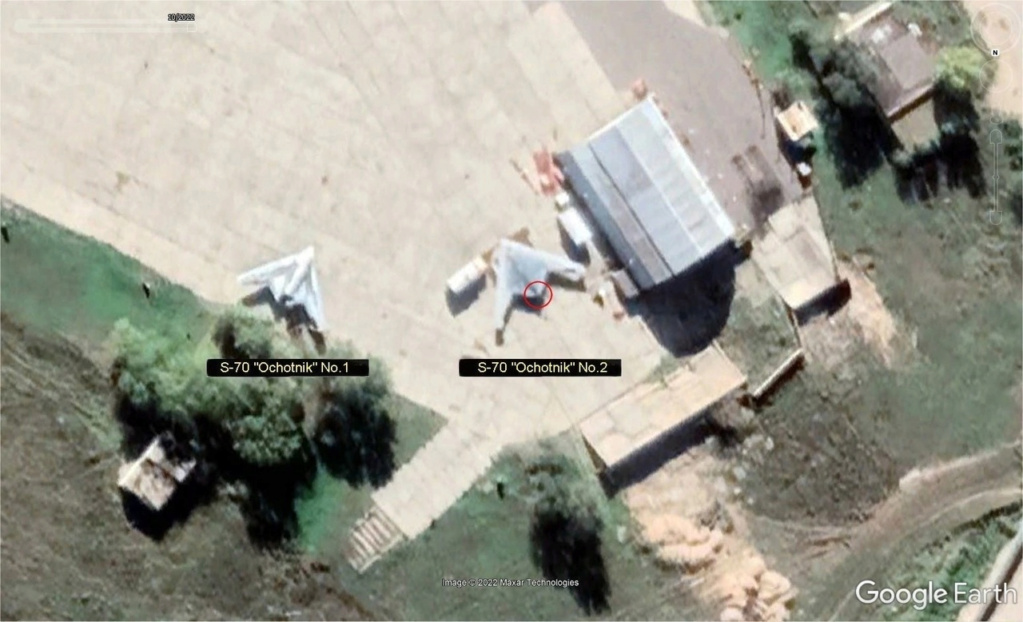
And there is going to be alot of drone projects to cover so I will just make one section on it describing each in separate paragraphs.
The Su-70 is a loyal wingman stealth drone and internal weapon bays on the drone are showcased to be the same size as the Su-57 and use the same weapons except as far I know they do not have wing bay roots for short range air to air missiles. The drone has its own radar and EW systems combined with stealth to make it a formidable drone, 6000km range, 1,400km/hr speeds and besides air to ground weapons it can target aircrafts with air-to-air missiles. The prototype costs 1.5 billion rubles but when serially produced will cost 1 billion rubles so convert it to whatever currency you want.
The Grom seems to look like another stealth design drone but for air to ground purposes. It can also command and control up to 10 lightning drones. Combat radius of the Grom is 800kms ferry range 1600kms according to reference 95 there would be new engines from Yak to increase its max range to 3,500kms and speeds of up to 1,000km/hr. Max payload is 2,000kg and design shows it can carry 4 internal weapons or 2 huge weapons while having the option of using 2 external points underneath the wings for weapons as well. choices of weapons are Kab-500, Kab-250 bombs, izdeliye 85 and the Kh-38 missiles.
The lightning drones is what the Grom drones will control so up to 10. It was discussed earlier that 16 of these can fit in the main internal weapons bays of the Su-57 and I am more than likely assuming that 2 more can fit in the internal compartments of the wing bay roots totaling 18. As guess their length size is 1.5 meters their wingspan is 1.2 meters but of course the wings can fold. And based on design it uses RAM and a stealth design to lower its infrared and radar signatures. So pretty much it goes like the Su-57 can control 4 Grom drones and 4 of those Grom drones can control 10 lightning drones. As stated in last paragraph pictures show that 4 weapons can fit in the Grom and because of size we are assured that 4 lightning drones can fit so 4 times 4 + 18 we will have like 34 lightning drones or carry more with external carry as well. Or the Su-57 can control 4 Su-70s to make the option of 82 lightning drone swarms possible. Range of these drones is 700kms, speed 600-700km/hr and payloads somewhere between 5 to 7 kg.
The Frigate drone is a VTOL drone design that is used for ships, reference 74 states that there will be a drone that is based on a deck version which might be the Frigate or the huge helicopter drone in reference 75 but maiden flight is expected in 2025 and series production for 2026. The wingspan is 19 meters however they can fold giving it 10 meters, max range is 5000km endurance flight for 10 hours, 1,700kg of payload if it takes off like a plane or if it takes off like a helicopter it will be 1000kg. flight speed is between 0 to up to 600km/hr.
The Altius drone can also interact with the Su-57 but in my opinion would not be preferable but rather for aircrafts like the Su-35 and Su-34. The drone can stay in the air from 24 to 48 hours with a max distance of 10,000kms. The drone can carry similar heavy weapons like the Grom, and Su-70 and the payload carry is estimated at 2 tons but information changes all the time with this drone. Korsar drone has a 250km range, Orion has a 200kg paload, the Helios or Orion-2 will have an increased payload with a 30 hour flight endurance. Sirius drone has a 450kg payload with a 40 hour flight endurance, and the orlan-10 uses a stealth profile with composites. Also, one of Russia's space company has proposed the idea of using satellites to fire lasers into drones energizing them for continual flight based on some of their patents.
production numbers and operation dates are all mixed up from sources for most of these drones.
Su-34/Su-35
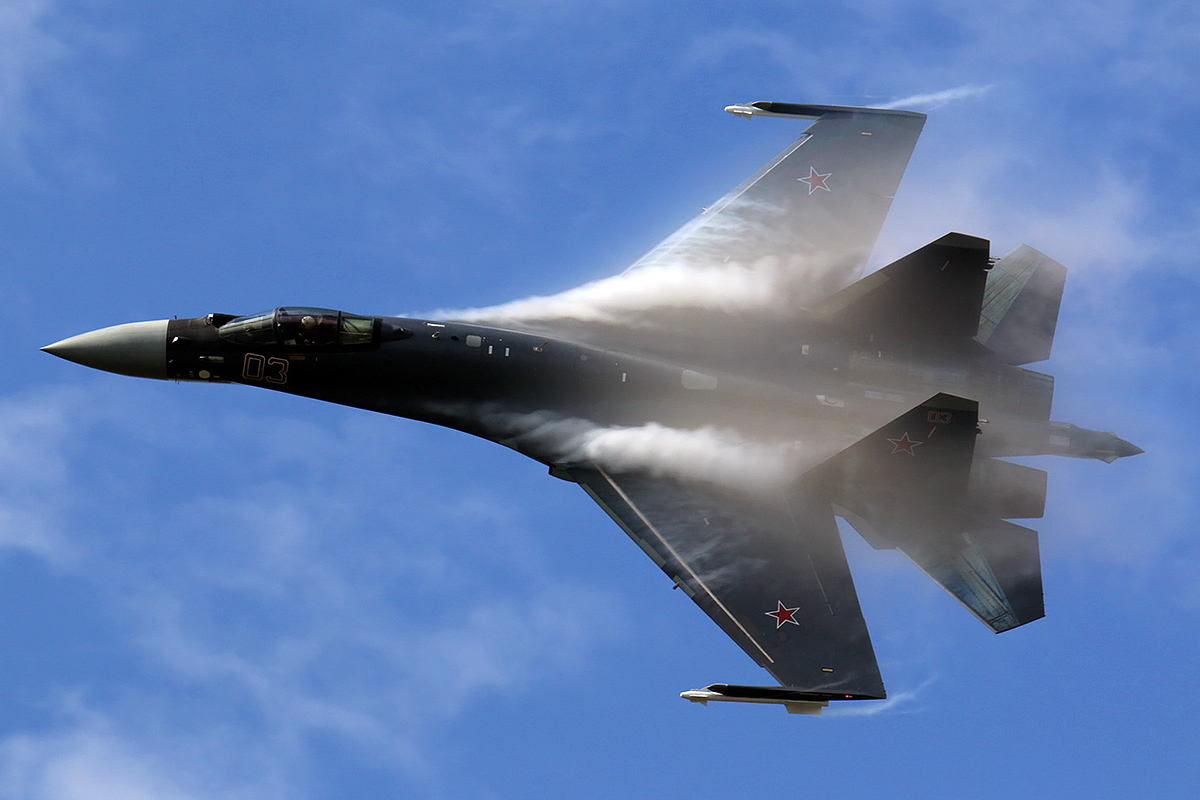
About 1110 Su-35s are present in Russia's air force and 22 more to be delivered in 2024. Utilizes the same weapons used on the Su-57. Some modification has been down like some being built to use the same stealth cockpit glass as the Su-57, The AL-41s from Su-57s with stealthier profiles than their existing AL-41 engines as hand me downs, also applied RAM to engine inlets and compressor, and new EW systems that were given in 2016 which can be used from Rostec's showcased Su-35 GaN modules present in their 2014 PDF book. Radar has a 350km range against a 3m2 target or reduced to .01m2 at a 90km range. Uses a laser range finder with 20km tracking of aerial targets and 30kms for ground targets. OLS-35 can track a target from 35kms from front and 90kms from back. Checked Russia defense net there is argument about rather if the Su-35 was downed or suffering an engine failure based on crash.
There are 144 Su-34s and 7 prototypes but difficult to assume the losses since some claims are true and false and difficult to know how many of them have been modernized to Su-34Ms? Carries similar weapons to the Su-35 and Su-57 and like both aircrafts in 2018 it got new EW modules which could have been the ones showcased in the 2014 Rostec PDF book. Also the aircraft like the Su-57 has 360-degree radar coverage. old radar information states 200km-250kms for large surface targets and fighter sized aircrafts at 120kms. N012 is the rear facing radar and the side radars will be 4th gen radars known as Pika-M with a resolution of 30cm, and a 300km radar range, Kulon the company that designed the 4th gen side radars is also working on a 5th gen AESA version, so more than likely the Su-34 also got a new forward and rear facing radars. Also the frontal RCS of the aircraft got reduced to a magnitude times smaller or 10 times smaller in size.
Tu-22/Tu-95/Tu160

Even the Tu-160 has gone through modernization to the Tu-160M2 standards, it seems based on tanks aircrafts, EW systems and radars the letter M gets put after it if goes through modernization, like the T-90Ms or the new EW systems that were showcased in the 2014 with letter Ms after their names. There are about 17 T-160s with one Tu-160M2 produced and 10 more Tu-160M2s on order and the goal is to also modernize the existing Tu-160s. Can fly in supersonic speeds has max range of 12,300kms and combat range varies between 2000kms or 7000kms based on speeds. Now the aircraft is going to receive new avionics, newer and better efficient engines, use RAM coating and use missiles air to air missiles for self-defense against incoming missiles. Now the weapons being used will be bigger than the weapons on the aircrafts that were last discussed but not unlikely that they could be used as well. The Tu-160 has two internal rotary launchers for each bay in total that can hold 12 kh-55s and their variations or 24 kh-15s. The kh-55,Kh-65, Kh-555, kh-50, Kh-BD, Kh101, Kh102 are all going to be huge subsonic missiles, depending on which you are using they can be conventional or nuclear warheads, depending on which you are using can be either 300kms or more than 5000kms, depending on which you are using they can be average or a stealth design with coating giving them an RCS of .01m2. The newest versions cost like 1 million dollars and fly as low as 30 to 70 meters. Now the Kh-15s are basically hypersonic ballistic missiles, a tad bit smaller than the Kh-55s and their variations, 300km range and climb to 40kms before diving down to their targets with conventional or nuclear warheads. The Kh-15s seem to almost be able to fit into Su-57s with weapons bays ranging from 4.2 to 4.6 meters in length but its also safe to assume that since the Gremlin is a hypersonic air to ground missile designed to fit in the Su-57 can also fit into the Tu-160s by 24 times the amount. I have no Idea if Zircon or Kinzhals offer the option to fit in the aircraft by probably by a smaller amount than the Kh-55s or not compatible at all. Also the GZUR missile is a Mach 6 missile with a 6-meter length with a range of 1,500kms and is used as a scramjet, KTRV also at that time talked about a mach 12-13 missile and states in 2020 that GZUR can be produced up to 50 units a year. So 12 GZURs can fit as well and the benefits of scramjets is hypersonic speeds, lower altitudes and more maneuverability to overcome defenses.
There are 63 Tu-22s(80% are replaced to Tu-M3M avionic standards) in service since 2018 but more could have been produced later. Range was 6,800kms and a 2,500km range with 10,000kg payload but the aircrafts will get new NK-32 engines to increase the performance specs. New radars, avionics and EW systems added and about 30 will be upgraded to the M3M standards. Can launch 3 Kh-32s and these missiles have a 600-1000km range and speeds anywhere to mach 3.5 to mach 4.6 with a 40km flight ceiling or 4 Kinzhal missiles.
There are about 55 Tu-95MS and they are undergoing a modernization program to get upgraded to the Tu-95MSM versions. Max range is 15,000kms but is receiving new engines, new avionics like radar and EW systems. can hold 6 kh-55s internally and 8 Kh-55 externally which is about 14 in total, so I am assuming the Tu-160 I discussed earlier can probably carry more externally. The missile length of the Kh-32 which I forgot to mention for the paragraph above is like 12 meters long so I have no idea how many of these can be carried.
A-50/A-100
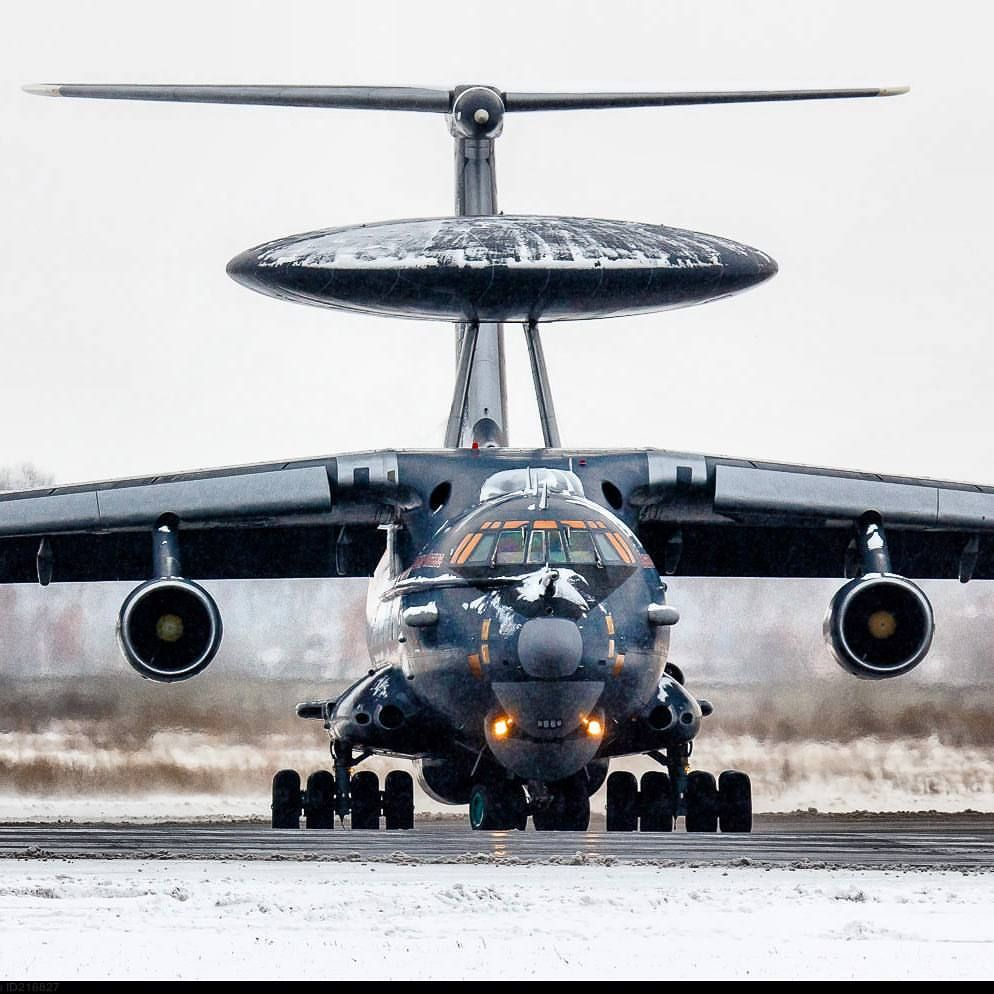
The A-50M AWACs has a range of 7,500kms, radar detection range of 650kms for air targets and 300km for ground targets, can track 300 different targets and command 10 aircrafts, how many there are produced is information I can't find right now. A-100 is to be tested and completed by 2024 but no idea on the production date. The A-100 will have a longer-range radar with improved capabilities, function on dual band and deal with stealth targets at a farther distance. Because Vega is the radar designer, they also tested photonic radars so there might be a possibility it can be included on the A-100, but no one knows. also new EW systems as well.
References
1. https://pbs.twimg.com/media/EqRwP6vVQAAKAlc?format=jpg&name=4096x4096
2.«Изделие 30»: в чём уникальность нового двигателя для российского самолёта Су-57 — РТ на русском (rt.com)
3.Войска с 2027 года начнут получать истребитель Су-57 в новом облике - коллегия ВПК - (militarynews.ru)
4.Su-57 fifth-generation fighter may get flat nozzle for stealth purposes — pilot - Military & Defense - TASS
5. fmdlf110.jpg | Servimg.com - Free image hosting service
6. Rostec has created a stealth glass with improved performance (topwar.ru)
7. https://www.globalsecurity.org/military/world/russia/images/su-57-image421.jpg
8.The dates for the start of tests of a new communication complex for Su-57 fighters have been announced (topwar.ru)
9. Глава ОАК: планируем рост гражданского сектора и создание боевых платформ нового поколения - Интервью ТАСС (tass.ru)
10.http://www.promweekly.ru/book/Phasatron-100_years.pdf
11. https://i.servimg.com/u/f90/20/35/73/17/file-110.png
12. https://i.servimg.com/u/f90/20/35/73/17/file-610.jpg
13. https://i.servimg.com/u/f14/20/10/81/30/photon10.jpg
14. d36d8fe0d10dbae67246f6dc9ad700eb.pdf (niip.ru)
15.Гиперзвуки «Су»: российские военные получат компактную ракету | Статьи | Известия (iz.ru)
16.https://youtu.be/NJEz7h_cKPg
17. https://i14.servimg.com/u/f14/20/10/81/30/main-q11.png
18.Telegram: Contact @DonbassDevushka
19. Willy Dequid on Twitter: "#Russia Saturn-Lyulka is working on a variable cycle (three circuits) military engine. According to Evgeny Marchukov, OKB Lyulka, two versions of this scheme are being developed. The first bench tests of the demonstrator should have started sometime in 2021. @5thSu @qweqwellkk https://t.co/MXxXT1Dipu" / Twitter
20. «Российские ученые получили магнитный нанопорошок для 6G-технологий» в блоге «Перспективные разработки, НИОКРы, изобретения» - Сделано у нас (sdelanounas.ru)
21. Ростех испытал демонстратор двигателя для перспективных орбитальных самолетов (rostec.ru)
22.Когда начнется эра российских квантовых компьютеров? (naukatehnika.com)
23. https://translate.yandex.com/translate?lang=ru-en&url=https://sdelanounas.ru/blogs/140329/
24. Metamaterials: Has China Just Made a Major Stealth Breakthrough? (thedailybeast.com)
25.Scientists create stealth technology that hides metal masts and antennas completely (sciencex.com)
26. In Russia presents radar absorbing honeycomb material PRM-SA-N (weaponews.com)
27."Aristide" is a new Russian material from the future. | Beyond the usual | Zen (dzen.ru)
28.Самолеты Су-57 с 2024 года планируют оснастить датчиками контроля состояния планера - ТАСС (tass.ru)
29. Источник: истребитель Су-57 будет способен вести до четырех беспилотников "Охотник" - ТАСС (tass.ru)
30. Roscosmos is developing a heat-shielding coating for hypersonic aircraft - (militarynews.ru)
31.Минобороны заказало разработку оружия против гиперзвуковых ракет - МФРК ДП (topwar.ru)
32. «Изделие 30» по удельной тяге превосходит все зарубежные аналоги » Авиация России (aviation21.ru)
33. OKB named after Lyulka in 2021 will begin testing. | AVIATION | VK
34. PAK FA T-50 (part 5) • Forum "Stealth Machines" (iboards.ru)
35. ПАК ФА Т-50 (часть 5) • Форум "Стелс машины" (iboards.ru)
36.(4671) Su-57 Stealth Fighter: News #7 - Page 20 (russiadefence.net)
37.Фотонные радары, радиофотоника и стелс-технологии (naukatehnika.com)
38. The Kh-59MK2 is a new guided cruise missile for the PAK FA | THEY | Zen (dzen.ru)
39. #kh59mk2 - Twitter Search / Twitter
40. The performance characteristics of the Grom-E1 and Grom-E2 PAB for the Su-57 and not only were revealed (topwar.ru)
41. Guided glide bomb PBK-500U. "Drill" completes the tests (topwar.ru)
42.https://m.vz.ru/news/2021/7/17/1109463.html
43. https://i.ibb.co/pdmtmxy/image.jpg
44.https://www.rt.com/russia/529762-check-mate-fighter-stealth-jet/
45. https://www.militarynews.ru/story.asp?rid=1&nid=553526&lang=RU
46.https://bmpd.livejournal.com/4354165.html
47.https://m.uacrussia.ru/ru/news/oak-i-shvabe-podpisali-soglashenie-o-sovmestnoy-rabote-nad-programmoy-lts-checkmate/
48.https://eadaily.com/ru/news/2021/12/21/bespilotnaya-modifikaciya-su-75-chto-ostalos-za-kadrom-na-dubai-airshow-2021
49. https://www.fips.ru/cdfi/fips.dll/ru?ty=29&docid=2770885
50. Enabling 5G with GaN Technology: Setting the Table for Success - Qorvo
51. 73fbb848fe927c2288e9b2c3f5f5a2ab.pdf (niip.ru)
52. В Самаре прошли стендовые испытания двигателя для ПАК ДА » Авиация России (aviation21.ru)
53.Источник: демонстрационный образец ПАК ДА будет готов к 2023 году - ТАСС (tass.ru)
54. https://i.servimg.com/u/f77/20/24/79/23/nk-32m12.png
55. https://i.servimg.com/u/f77/20/24/79/23/nk-32m13.png
56. Источник: ПАК ДА получит комплекс обороны, который защитит его от всех видов оружия - ТАСС (tass.ru)
57.Источник: http://bastion-karpenko.ru/ ВТС «БАСТИОН» A.V.Karpenko
58. Источник: утвержден окончательный облик нового "стелс"-бомбардировщика - РИА Новости, 02.04.2021 (ria.ru)
59. ПАК ДА сможет преодолевать рубежи ПВО НАТО незамеченным, сообщил источник - РИА Новости, 24.03.2021 (ria.ru)
60. В России планируют создать беспилотный стратегический бомбардировщик - РИА Новости, 03.03.2020 (ria.ru)
61.В России началось производство ракетоносца ПАК ДА - ВПК.name (vpk.name)
62. TsAGI tested an improved model of the Elephant aircraft - News - Press-center - TsAGI (tsagi-ru.translate.goog)
63. High-flying truck: Russia is preparing to replace the An-124 and An-22 | Articles | News (iz.ru)
64. Грузовик высокого полета: Россия готовит замену Ан-124 и Ан-22 | Статьи | Известия (iz.ru)
65.PAK VTA — heavy transport aircraft with an oval fuselage » Russian Aviation (aviation21.ru)
66.Russia to Build World’s Biggest and Fastest Air Freighter - RUSSIAN AVIATION (ruaviation.com)
67.Серийный выпуск тяжелых ударных дронов "Охотник" начнется в 2023 году - РИА Новости, 18.05.2022 (ria.ru)
68. "Hunter" for a billion: the price of the most powerful drone in Russia has become known | Articles | News (iz.ru)
69."Кронштадт" заключил госконтракт на разработку эскизного проекта БЛА "Гром" - ТАСС (tass.ru)
70. Источник: новые ударные БЛА "Сириус" смогут нести управляемое и неуправляемое вооружение - ВПК.name (vpk.name)
71.Новый беспилотник "Орион" с бортовой РЛС проходит летные испытания - ТАСС (tass.ru)
72. В России создали первые дроны с отечественными тепловизорами - РИА Новости, 19.08.2022 (ria.ru)
73.Rostec designs new UAV navigation system, making drones invulnerable to electronic warfare - Military & Defense - TASS
74. https://i.servimg.com/u/f10/19/89/13/22/fkkpoz10.png
75. Advanced deck-based drone to make maiden flight in 2025 — source - Military & Defense - TASS
76. Reconnaissance drone trials to be completed by 2022 year-end, source says - Military & Defense - TASS
77. Новый российский ударный беспилотник "Сириус" совершит первый полет в мае - ТАСС (tass.ru)
78. Беспилотник "Гелиос-РЛД" совершит свой первый вылет в 2024 году - ТАСС (tass.ru)
79. 000283.jpg | Servimg.com - Free image hosting service
80.https://tass.com/defense/1358309
81.https://www.youtube.com/watch?v=GCzeh5deWcU
82.Первый ударный комплекс с БПЛА "Альтиус" поступит в войска осенью - ТАСС (tass.ru)
83.Разработчик объяснил, зачем высокоточное оружие новому беспилотнику «Иноходец-РУ» - ТРК Звезда Новости, 26.08.2021 (tvzvezda.ru)
84. https://pbs.twimg.com/media/E-CbOB6WQAAxy5L?format=jpg&name=small
85. The first hybrid ZALA Aero drone made a flight of one thousand kilometers - TASS (tass-ru.translate.goog)
86.Разработчик рассказал о планах по созданию носителя дронов на базе Ил-76 - РИА Новости, 20.08.2021 (ria.ru)
87."Кронштадт" начал эскизное проектирование тяжелого ударного БПЛА "Гром" - РИА Новости, 20.08.2021 (ria.ru)
88.Интервью генерального директора компании «Кронштадт» Сергея Богатикова - bmpd — LiveJournal
89.Military-technical forum ARMY-2017 - Exhibition pavilions - Vitaly Kuzmin
90.Ударный дрон ТПК-7Э. - Блокпост военного милитариста — LiveJournal
91. Новости Aviation EXplorer: Ударные беспилотники "Орион" вооружат ракетами "Вихрь" (aex.ru)
92. Источник рассказал, когда начнутся испытания ударного дрона "Сириус" - РИА Новости, 17.04.2021 (ria.ru)
93.The timing of the start of flight tests of the strike drone "Sirius" (topwar.ru)
94.KRET closed their website down and removed their articles from promweekly. http://www.promweekly.ru/archive/kret/2020/KRET_2-2020.pdf https://i.servimg.com/u/f14/20/10/81/30/uav_ku10.jpg
https://i14.servimg.com/u/f14/20/10/81/30/uav_ku11.jpg
95.https://youtu.be/MO8Z6TuSBMs
96. Источник рассказал о работах над единым комплексом оружия для БПЛА - РИА Новости, 14.04.2021 (ria.ru)
97. The project of the unmanned complex of group use "Lightning" (topwar.ru)
98. Ударный беспилотник "Гром" сможет управлять роем из десяти дронов "Молния" - ТАСС (tass.ru)
99. Источник: ударный беспилотник "Гром" будет носителем высокоточных ракет Х-38 - ТАСС (tass.ru)
100. Проект ударного беспилотного летательного аппарата АР-10 «Аргумент» - bmpd — LiveJournal
101. Источник: для ВКС создают работающие в стае реактивные беспилотники - РИА Новости, 01.03.2021 (ria.ru)
102. «Росэлектроника» разработает первые СВЧ-радиолокаторы для малоразмерных и беспилотных вертолетов (ruselectronics.ru)
103.Заряжающийся лазером из космоса беспилотник разработали в России - Российская газета (rg.ru)
104.Беспилотный летательный аппарат «Гром» в экспозиции форума «Армия-2020» - bmpd — LiveJournal
105. Министерство обороны России подписало серийный контракт на закупку БЛА «Орион» - bmpd — LiveJournal
106. Беспилотные летательные аппараты «Сириус» и «Гелиос» в экспозиции форума «Армия-2020» - bmpd — LiveJournal
107. Скоростной ударный беспилотный летательный аппарат «Гром» - bmpd — LiveJournal
108.«Альтиус». Тяжёлый российский беспилотник с искусственным интеллектом (topwar.ru)
109.UAV Forpost-R Receives Laser Illumination Optoelectronic System (mil.today)
110. Russia Presented Military Version of UAV Positioning Laser System
111. MAKS 2019: Phazotron développe un radar multifonctions en bande Ku pour les drones (air-cosmos.com)
112. На МАКС-2019 показали ранее неизвестный тяжелый беспилотник (topwar.ru)
113. Появилось изображение первого российского гиперзвукового космического дрона - РИА Новости, 03.03.2020 (ria.ru)
114. Russian military will receive virtual reality helmet to control UAVs Unmanned Aerial Vehicles 11502171 | weapons defence industry military technology UK | analysis focus army defence military industry army (armyrecognition.com)
115. Летная модель беспилотника "Фрегат" успешно прошла испытания - РИА Новости, 02.03.2020 (ria.ru)
116.TsAMTO / / Aviation Regiment of the Central Military District in the Chelyabinsk region was replenished with a modernized Su-34 fighter-bomber (armstrade.org)
117. "OPK" launches mass production of "all-seeing" radars | Weekly "Military-Industrial Courier" (archive.org)
118. Гиперзвуковая ракета КТРВ / ГЗУР (проект) | MilitaryRussia.Ru — отечественная военная техника (после 1945г.)
119. A-50U - "mushroom plane" or a new aviation complex AWACS (topwar.ru)
120.The second "Premier": another "flying super radar" will be built for the VKS | Articles | News (iz.ru)
And there is going to be alot of drone projects to cover so I will just make one section on it describing each in separate paragraphs.
The Su-70 is a loyal wingman stealth drone and internal weapon bays on the drone are showcased to be the same size as the Su-57 and use the same weapons except as far I know they do not have wing bay roots for short range air to air missiles. The drone has its own radar and EW systems combined with stealth to make it a formidable drone, 6000km range, 1,400km/hr speeds and besides air to ground weapons it can target aircrafts with air-to-air missiles. The prototype costs 1.5 billion rubles but when serially produced will cost 1 billion rubles so convert it to whatever currency you want.
The Grom seems to look like another stealth design drone but for air to ground purposes. It can also command and control up to 10 lightning drones. Combat radius of the Grom is 800kms ferry range 1600kms according to reference 95 there would be new engines from Yak to increase its max range to 3,500kms and speeds of up to 1,000km/hr. Max payload is 2,000kg and design shows it can carry 4 internal weapons or 2 huge weapons while having the option of using 2 external points underneath the wings for weapons as well. choices of weapons are Kab-500, Kab-250 bombs, izdeliye 85 and the Kh-38 missiles.
The lightning drones is what the Grom drones will control so up to 10. It was discussed earlier that 16 of these can fit in the main internal weapons bays of the Su-57 and I am more than likely assuming that 2 more can fit in the internal compartments of the wing bay roots totaling 18. As guess their length size is 1.5 meters their wingspan is 1.2 meters but of course the wings can fold. And based on design it uses RAM and a stealth design to lower its infrared and radar signatures. So pretty much it goes like the Su-57 can control 4 Grom drones and 4 of those Grom drones can control 10 lightning drones. As stated in last paragraph pictures show that 4 weapons can fit in the Grom and because of size we are assured that 4 lightning drones can fit so 4 times 4 + 18 we will have like 34 lightning drones or carry more with external carry as well. Or the Su-57 can control 4 Su-70s to make the option of 82 lightning drone swarms possible. Range of these drones is 700kms, speed 600-700km/hr and payloads somewhere between 5 to 7 kg.
The Frigate drone is a VTOL drone design that is used for ships, reference 74 states that there will be a drone that is based on a deck version which might be the Frigate or the huge helicopter drone in reference 75 but maiden flight is expected in 2025 and series production for 2026. The wingspan is 19 meters however they can fold giving it 10 meters, max range is 5000km endurance flight for 10 hours, 1,700kg of payload if it takes off like a plane or if it takes off like a helicopter it will be 1000kg. flight speed is between 0 to up to 600km/hr.
The Altius drone can also interact with the Su-57 but in my opinion would not be preferable but rather for aircrafts like the Su-35 and Su-34. The drone can stay in the air from 24 to 48 hours with a max distance of 10,000kms. The drone can carry similar heavy weapons like the Grom, and Su-70 and the payload carry is estimated at 2 tons but information changes all the time with this drone. Korsar drone has a 250km range, Orion has a 200kg paload, the Helios or Orion-2 will have an increased payload with a 30 hour flight endurance. Sirius drone has a 450kg payload with a 40 hour flight endurance, and the orlan-10 uses a stealth profile with composites. Also, one of Russia's space company has proposed the idea of using satellites to fire lasers into drones energizing them for continual flight based on some of their patents.
production numbers and operation dates are all mixed up from sources for most of these drones.
Su-34/Su-35
About 1110 Su-35s are present in Russia's air force and 22 more to be delivered in 2024. Utilizes the same weapons used on the Su-57. Some modification has been down like some being built to use the same stealth cockpit glass as the Su-57, The AL-41s from Su-57s with stealthier profiles than their existing AL-41 engines as hand me downs, also applied RAM to engine inlets and compressor, and new EW systems that were given in 2016 which can be used from Rostec's showcased Su-35 GaN modules present in their 2014 PDF book. Radar has a 350km range against a 3m2 target or reduced to .01m2 at a 90km range. Uses a laser range finder with 20km tracking of aerial targets and 30kms for ground targets. OLS-35 can track a target from 35kms from front and 90kms from back. Checked Russia defense net there is argument about rather if the Su-35 was downed or suffering an engine failure based on crash.
There are 144 Su-34s and 7 prototypes but difficult to assume the losses since some claims are true and false and difficult to know how many of them have been modernized to Su-34Ms? Carries similar weapons to the Su-35 and Su-57 and like both aircrafts in 2018 it got new EW modules which could have been the ones showcased in the 2014 Rostec PDF book. Also the aircraft like the Su-57 has 360-degree radar coverage. old radar information states 200km-250kms for large surface targets and fighter sized aircrafts at 120kms. N012 is the rear facing radar and the side radars will be 4th gen radars known as Pika-M with a resolution of 30cm, and a 300km radar range, Kulon the company that designed the 4th gen side radars is also working on a 5th gen AESA version, so more than likely the Su-34 also got a new forward and rear facing radars. Also the frontal RCS of the aircraft got reduced to a magnitude times smaller or 10 times smaller in size.
Tu-22/Tu-95/Tu160
Even the Tu-160 has gone through modernization to the Tu-160M2 standards, it seems based on tanks aircrafts, EW systems and radars the letter M gets put after it if goes through modernization, like the T-90Ms or the new EW systems that were showcased in the 2014 with letter Ms after their names. There are about 17 T-160s with one Tu-160M2 produced and 10 more Tu-160M2s on order and the goal is to also modernize the existing Tu-160s. Can fly in supersonic speeds has max range of 12,300kms and combat range varies between 2000kms or 7000kms based on speeds. Now the aircraft is going to receive new avionics, newer and better efficient engines, use RAM coating and use missiles air to air missiles for self-defense against incoming missiles. Now the weapons being used will be bigger than the weapons on the aircrafts that were last discussed but not unlikely that they could be used as well. The Tu-160 has two internal rotary launchers for each bay in total that can hold 12 kh-55s and their variations or 24 kh-15s. The kh-55,Kh-65, Kh-555, kh-50, Kh-BD, Kh101, Kh102 are all going to be huge subsonic missiles, depending on which you are using they can be conventional or nuclear warheads, depending on which you are using can be either 300kms or more than 5000kms, depending on which you are using they can be average or a stealth design with coating giving them an RCS of .01m2. The newest versions cost like 1 million dollars and fly as low as 30 to 70 meters. Now the Kh-15s are basically hypersonic ballistic missiles, a tad bit smaller than the Kh-55s and their variations, 300km range and climb to 40kms before diving down to their targets with conventional or nuclear warheads. The Kh-15s seem to almost be able to fit into Su-57s with weapons bays ranging from 4.2 to 4.6 meters in length but its also safe to assume that since the Gremlin is a hypersonic air to ground missile designed to fit in the Su-57 can also fit into the Tu-160s by 24 times the amount. I have no Idea if Zircon or Kinzhals offer the option to fit in the aircraft by probably by a smaller amount than the Kh-55s or not compatible at all. Also the GZUR missile is a Mach 6 missile with a 6-meter length with a range of 1,500kms and is used as a scramjet, KTRV also at that time talked about a mach 12-13 missile and states in 2020 that GZUR can be produced up to 50 units a year. So 12 GZURs can fit as well and the benefits of scramjets is hypersonic speeds, lower altitudes and more maneuverability to overcome defenses.
There are 63 Tu-22s(80% are replaced to Tu-M3M avionic standards) in service since 2018 but more could have been produced later. Range was 6,800kms and a 2,500km range with 10,000kg payload but the aircrafts will get new NK-32 engines to increase the performance specs. New radars, avionics and EW systems added and about 30 will be upgraded to the M3M standards. Can launch 3 Kh-32s and these missiles have a 600-1000km range and speeds anywhere to mach 3.5 to mach 4.6 with a 40km flight ceiling or 4 Kinzhal missiles.
There are about 55 Tu-95MS and they are undergoing a modernization program to get upgraded to the Tu-95MSM versions. Max range is 15,000kms but is receiving new engines, new avionics like radar and EW systems. can hold 6 kh-55s internally and 8 Kh-55 externally which is about 14 in total, so I am assuming the Tu-160 I discussed earlier can probably carry more externally. The missile length of the Kh-32 which I forgot to mention for the paragraph above is like 12 meters long so I have no idea how many of these can be carried.
A-50/A-100
The A-50M AWACs has a range of 7,500kms, radar detection range of 650kms for air targets and 300km for ground targets, can track 300 different targets and command 10 aircrafts, how many there are produced is information I can't find right now. A-100 is to be tested and completed by 2024 but no idea on the production date. The A-100 will have a longer-range radar with improved capabilities, function on dual band and deal with stealth targets at a farther distance. Because Vega is the radar designer, they also tested photonic radars so there might be a possibility it can be included on the A-100, but no one knows. also new EW systems as well.
References
1. https://pbs.twimg.com/media/EqRwP6vVQAAKAlc?format=jpg&name=4096x4096
2.«Изделие 30»: в чём уникальность нового двигателя для российского самолёта Су-57 — РТ на русском (rt.com)
3.Войска с 2027 года начнут получать истребитель Су-57 в новом облике - коллегия ВПК - (militarynews.ru)
4.Su-57 fifth-generation fighter may get flat nozzle for stealth purposes — pilot - Military & Defense - TASS
5. fmdlf110.jpg | Servimg.com - Free image hosting service
6. Rostec has created a stealth glass with improved performance (topwar.ru)
7. https://www.globalsecurity.org/military/world/russia/images/su-57-image421.jpg
8.The dates for the start of tests of a new communication complex for Su-57 fighters have been announced (topwar.ru)
9. Глава ОАК: планируем рост гражданского сектора и создание боевых платформ нового поколения - Интервью ТАСС (tass.ru)
10.http://www.promweekly.ru/book/Phasatron-100_years.pdf
11. https://i.servimg.com/u/f90/20/35/73/17/file-110.png
12. https://i.servimg.com/u/f90/20/35/73/17/file-610.jpg
13. https://i.servimg.com/u/f14/20/10/81/30/photon10.jpg
14. d36d8fe0d10dbae67246f6dc9ad700eb.pdf (niip.ru)
15.Гиперзвуки «Су»: российские военные получат компактную ракету | Статьи | Известия (iz.ru)
16.https://youtu.be/NJEz7h_cKPg
17. https://i14.servimg.com/u/f14/20/10/81/30/main-q11.png
18.Telegram: Contact @DonbassDevushka
19. Willy Dequid on Twitter: "#Russia Saturn-Lyulka is working on a variable cycle (three circuits) military engine. According to Evgeny Marchukov, OKB Lyulka, two versions of this scheme are being developed. The first bench tests of the demonstrator should have started sometime in 2021. @5thSu @qweqwellkk https://t.co/MXxXT1Dipu" / Twitter
20. «Российские ученые получили магнитный нанопорошок для 6G-технологий» в блоге «Перспективные разработки, НИОКРы, изобретения» - Сделано у нас (sdelanounas.ru)
21. Ростех испытал демонстратор двигателя для перспективных орбитальных самолетов (rostec.ru)
22.Когда начнется эра российских квантовых компьютеров? (naukatehnika.com)
23. https://translate.yandex.com/translate?lang=ru-en&url=https://sdelanounas.ru/blogs/140329/
24. Metamaterials: Has China Just Made a Major Stealth Breakthrough? (thedailybeast.com)
25.Scientists create stealth technology that hides metal masts and antennas completely (sciencex.com)
26. In Russia presents radar absorbing honeycomb material PRM-SA-N (weaponews.com)
27."Aristide" is a new Russian material from the future. | Beyond the usual | Zen (dzen.ru)
28.Самолеты Су-57 с 2024 года планируют оснастить датчиками контроля состояния планера - ТАСС (tass.ru)
29. Источник: истребитель Су-57 будет способен вести до четырех беспилотников "Охотник" - ТАСС (tass.ru)
30. Roscosmos is developing a heat-shielding coating for hypersonic aircraft - (militarynews.ru)
31.Минобороны заказало разработку оружия против гиперзвуковых ракет - МФРК ДП (topwar.ru)
32. «Изделие 30» по удельной тяге превосходит все зарубежные аналоги » Авиация России (aviation21.ru)
33. OKB named after Lyulka in 2021 will begin testing. | AVIATION | VK
34. PAK FA T-50 (part 5) • Forum "Stealth Machines" (iboards.ru)
35. ПАК ФА Т-50 (часть 5) • Форум "Стелс машины" (iboards.ru)
36.(4671) Su-57 Stealth Fighter: News #7 - Page 20 (russiadefence.net)
37.Фотонные радары, радиофотоника и стелс-технологии (naukatehnika.com)
38. The Kh-59MK2 is a new guided cruise missile for the PAK FA | THEY | Zen (dzen.ru)
39. #kh59mk2 - Twitter Search / Twitter
40. The performance characteristics of the Grom-E1 and Grom-E2 PAB for the Su-57 and not only were revealed (topwar.ru)
41. Guided glide bomb PBK-500U. "Drill" completes the tests (topwar.ru)
42.https://m.vz.ru/news/2021/7/17/1109463.html
43. https://i.ibb.co/pdmtmxy/image.jpg
44.https://www.rt.com/russia/529762-check-mate-fighter-stealth-jet/
45. https://www.militarynews.ru/story.asp?rid=1&nid=553526&lang=RU
46.https://bmpd.livejournal.com/4354165.html
47.https://m.uacrussia.ru/ru/news/oak-i-shvabe-podpisali-soglashenie-o-sovmestnoy-rabote-nad-programmoy-lts-checkmate/
48.https://eadaily.com/ru/news/2021/12/21/bespilotnaya-modifikaciya-su-75-chto-ostalos-za-kadrom-na-dubai-airshow-2021
49. https://www.fips.ru/cdfi/fips.dll/ru?ty=29&docid=2770885
50. Enabling 5G with GaN Technology: Setting the Table for Success - Qorvo
51. 73fbb848fe927c2288e9b2c3f5f5a2ab.pdf (niip.ru)
52. В Самаре прошли стендовые испытания двигателя для ПАК ДА » Авиация России (aviation21.ru)
53.Источник: демонстрационный образец ПАК ДА будет готов к 2023 году - ТАСС (tass.ru)
54. https://i.servimg.com/u/f77/20/24/79/23/nk-32m12.png
55. https://i.servimg.com/u/f77/20/24/79/23/nk-32m13.png
56. Источник: ПАК ДА получит комплекс обороны, который защитит его от всех видов оружия - ТАСС (tass.ru)
57.Источник: http://bastion-karpenko.ru/ ВТС «БАСТИОН» A.V.Karpenko
58. Источник: утвержден окончательный облик нового "стелс"-бомбардировщика - РИА Новости, 02.04.2021 (ria.ru)
59. ПАК ДА сможет преодолевать рубежи ПВО НАТО незамеченным, сообщил источник - РИА Новости, 24.03.2021 (ria.ru)
60. В России планируют создать беспилотный стратегический бомбардировщик - РИА Новости, 03.03.2020 (ria.ru)
61.В России началось производство ракетоносца ПАК ДА - ВПК.name (vpk.name)
62. TsAGI tested an improved model of the Elephant aircraft - News - Press-center - TsAGI (tsagi-ru.translate.goog)
63. High-flying truck: Russia is preparing to replace the An-124 and An-22 | Articles | News (iz.ru)
64. Грузовик высокого полета: Россия готовит замену Ан-124 и Ан-22 | Статьи | Известия (iz.ru)
65.PAK VTA — heavy transport aircraft with an oval fuselage » Russian Aviation (aviation21.ru)
66.Russia to Build World’s Biggest and Fastest Air Freighter - RUSSIAN AVIATION (ruaviation.com)
67.Серийный выпуск тяжелых ударных дронов "Охотник" начнется в 2023 году - РИА Новости, 18.05.2022 (ria.ru)
68. "Hunter" for a billion: the price of the most powerful drone in Russia has become known | Articles | News (iz.ru)
69."Кронштадт" заключил госконтракт на разработку эскизного проекта БЛА "Гром" - ТАСС (tass.ru)
70. Источник: новые ударные БЛА "Сириус" смогут нести управляемое и неуправляемое вооружение - ВПК.name (vpk.name)
71.Новый беспилотник "Орион" с бортовой РЛС проходит летные испытания - ТАСС (tass.ru)
72. В России создали первые дроны с отечественными тепловизорами - РИА Новости, 19.08.2022 (ria.ru)
73.Rostec designs new UAV navigation system, making drones invulnerable to electronic warfare - Military & Defense - TASS
74. https://i.servimg.com/u/f10/19/89/13/22/fkkpoz10.png
75. Advanced deck-based drone to make maiden flight in 2025 — source - Military & Defense - TASS
76. Reconnaissance drone trials to be completed by 2022 year-end, source says - Military & Defense - TASS
77. Новый российский ударный беспилотник "Сириус" совершит первый полет в мае - ТАСС (tass.ru)
78. Беспилотник "Гелиос-РЛД" совершит свой первый вылет в 2024 году - ТАСС (tass.ru)
79. 000283.jpg | Servimg.com - Free image hosting service
80.https://tass.com/defense/1358309
81.https://www.youtube.com/watch?v=GCzeh5deWcU
82.Первый ударный комплекс с БПЛА "Альтиус" поступит в войска осенью - ТАСС (tass.ru)
83.Разработчик объяснил, зачем высокоточное оружие новому беспилотнику «Иноходец-РУ» - ТРК Звезда Новости, 26.08.2021 (tvzvezda.ru)
84. https://pbs.twimg.com/media/E-CbOB6WQAAxy5L?format=jpg&name=small
85. The first hybrid ZALA Aero drone made a flight of one thousand kilometers - TASS (tass-ru.translate.goog)
86.Разработчик рассказал о планах по созданию носителя дронов на базе Ил-76 - РИА Новости, 20.08.2021 (ria.ru)
87."Кронштадт" начал эскизное проектирование тяжелого ударного БПЛА "Гром" - РИА Новости, 20.08.2021 (ria.ru)
88.Интервью генерального директора компании «Кронштадт» Сергея Богатикова - bmpd — LiveJournal
89.Military-technical forum ARMY-2017 - Exhibition pavilions - Vitaly Kuzmin
90.Ударный дрон ТПК-7Э. - Блокпост военного милитариста — LiveJournal
91. Новости Aviation EXplorer: Ударные беспилотники "Орион" вооружат ракетами "Вихрь" (aex.ru)
92. Источник рассказал, когда начнутся испытания ударного дрона "Сириус" - РИА Новости, 17.04.2021 (ria.ru)
93.The timing of the start of flight tests of the strike drone "Sirius" (topwar.ru)
94.KRET closed their website down and removed their articles from promweekly. http://www.promweekly.ru/archive/kret/2020/KRET_2-2020.pdf https://i.servimg.com/u/f14/20/10/81/30/uav_ku10.jpg
https://i14.servimg.com/u/f14/20/10/81/30/uav_ku11.jpg
95.https://youtu.be/MO8Z6TuSBMs
96. Источник рассказал о работах над единым комплексом оружия для БПЛА - РИА Новости, 14.04.2021 (ria.ru)
97. The project of the unmanned complex of group use "Lightning" (topwar.ru)
98. Ударный беспилотник "Гром" сможет управлять роем из десяти дронов "Молния" - ТАСС (tass.ru)
99. Источник: ударный беспилотник "Гром" будет носителем высокоточных ракет Х-38 - ТАСС (tass.ru)
100. Проект ударного беспилотного летательного аппарата АР-10 «Аргумент» - bmpd — LiveJournal
101. Источник: для ВКС создают работающие в стае реактивные беспилотники - РИА Новости, 01.03.2021 (ria.ru)
102. «Росэлектроника» разработает первые СВЧ-радиолокаторы для малоразмерных и беспилотных вертолетов (ruselectronics.ru)
103.Заряжающийся лазером из космоса беспилотник разработали в России - Российская газета (rg.ru)
104.Беспилотный летательный аппарат «Гром» в экспозиции форума «Армия-2020» - bmpd — LiveJournal
105. Министерство обороны России подписало серийный контракт на закупку БЛА «Орион» - bmpd — LiveJournal
106. Беспилотные летательные аппараты «Сириус» и «Гелиос» в экспозиции форума «Армия-2020» - bmpd — LiveJournal
107. Скоростной ударный беспилотный летательный аппарат «Гром» - bmpd — LiveJournal
108.«Альтиус». Тяжёлый российский беспилотник с искусственным интеллектом (topwar.ru)
109.UAV Forpost-R Receives Laser Illumination Optoelectronic System (mil.today)
110. Russia Presented Military Version of UAV Positioning Laser System
111. MAKS 2019: Phazotron développe un radar multifonctions en bande Ku pour les drones (air-cosmos.com)
112. На МАКС-2019 показали ранее неизвестный тяжелый беспилотник (topwar.ru)
113. Появилось изображение первого российского гиперзвукового космического дрона - РИА Новости, 03.03.2020 (ria.ru)
114. Russian military will receive virtual reality helmet to control UAVs Unmanned Aerial Vehicles 11502171 | weapons defence industry military technology UK | analysis focus army defence military industry army (armyrecognition.com)
115. Летная модель беспилотника "Фрегат" успешно прошла испытания - РИА Новости, 02.03.2020 (ria.ru)
116.TsAMTO / / Aviation Regiment of the Central Military District in the Chelyabinsk region was replenished with a modernized Su-34 fighter-bomber (armstrade.org)
117. "OPK" launches mass production of "all-seeing" radars | Weekly "Military-Industrial Courier" (archive.org)
118. Гиперзвуковая ракета КТРВ / ГЗУР (проект) | MilitaryRussia.Ru — отечественная военная техника (после 1945г.)
119. A-50U - "mushroom plane" or a new aviation complex AWACS (topwar.ru)
120.The second "Premier": another "flying super radar" will be built for the VKS | Articles | News (iz.ru)
We covered air defenses, drones, aircrafts and all those brand-new projects associated with them, but the last part would rather be more on the miscellaneous side talking about microwave weapons, lasers, EW systems, HF radars that nonetheless are important in engaging aerial targets.
Lasers
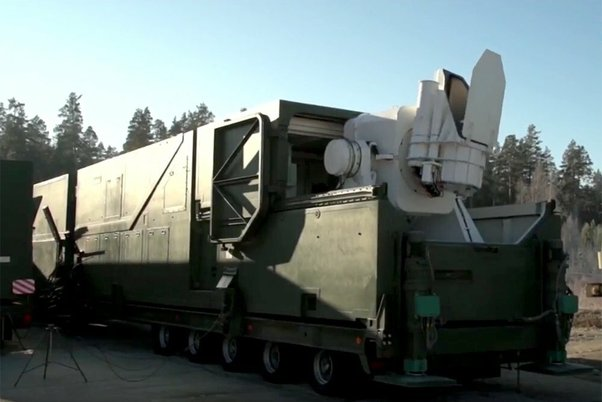
If you want to take a lesson from the Russians of wanting to have the most powerful lasers it would be best to master nuclear miniaturization technology.
What is known is that it is stated that the laser system can disable satellite optic systems at a 1,500km altitude. A nuclear facility helped develop the system and as anyone can guess Peresvet is a nuclear fuel pump laser system which could also explain why it's like a double trailer truck system because it uses a mobile nuclear reactor. As other countries developed diesel fuel to power lasers in the kilowatt range Russia decides to use mobile nuclear reactors instead to power their lasers to the megawatt range in which the Peresvet is said to range anywhere from 1 to 10 megawatts. Russian designers of the nuclear space tug Zeus even stated the tug can be used to use lasers which will work great in the vacuum of space to destroy satellites as well. The laser system called RAT can detect a drone at a 3.5km range with an RCS of .01m2, at 2.5km the drone will use EM waves to destroy electronics, at 1km suppress the telecommunications channel of the drone and at 1km or less physically destroy the drone with a laser, the vehicle has a 1000km travelling distance. Next is the KPVC uses radars and laser but ranges for those are unknown, and the power range is anywhere from 50-1000 kilowatts. Moscows institute of physics and technology has also simulated tests of using a laser to target an incoming 200-meter asteroid to earth in reference 10.
EM Weapons
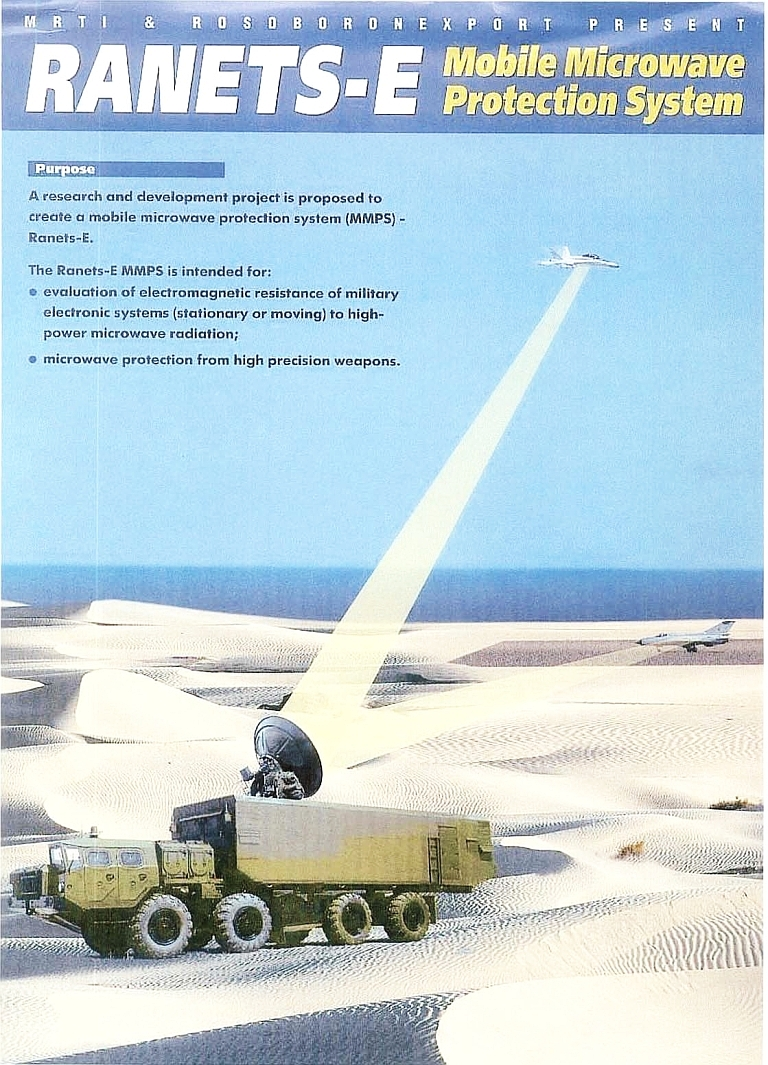
an EM wave cannon was created but information is classified that it can destroy drones, aircrafts or missiles at a 10km distance. We can add the RAT system to this topic as well, but it also uses a laser which is why I explained about the system earlier on the laser section. KRET spoke of putting EM wave cannons on 6th gen aircrafts but if the aircraft is unmanned and talks of the TOR system using EM wave cannons for air defense. Earliest EM wave cannon project was the Ranets-E. I am assuming there are a few EM wave cannon systems that I am only able to find on the public domain based on what I gathered here.
EW systems
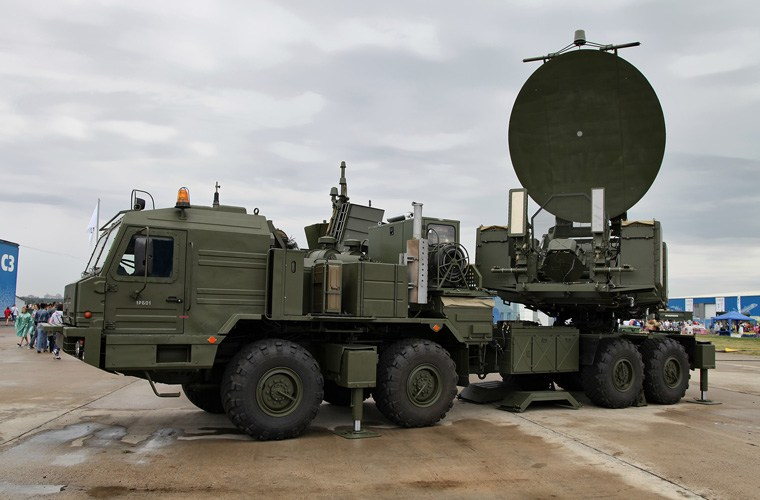
The Krasukha-2 operates in the S-band with a jamming range of 250kms and it works against AWACs radars in that range, while the Krasukha-4 operates in the X-band and Ku-band with a jamming range of 300kms and works against LEO satellites. Back in part 2 thread, three of the GaN MMICs that were showcase for the 3 airborne systems the 4th and final EW system to receive these modules as well is the Krasukha-4. The Krasukha-4 was able to suppress one radar satellite or one E-8 Joint STARS reconnaissance aircraft at a time or 11 tactical aircraft simultaneously according to claims. Murmansk-BN is designed to jam HF frequencies at ranges of 5000km to 8000kms blocking HF communications between adversary forces exchanging data. The Repellent-1 detects miniature drones from 35kms and jams them at a 2.5km range. The Leer-3 has a 30km range jamming cellular devices and up to 2000 can be jammed or SMS messages can be sent to them as well along with drones for 10s of hours and coordinates of devices can be sent to command to make decisions in the battlefield. The Pelena-B is a smoke generator system that camouflages an area to reduce visibility and reduce infrared homing systems from locking on targets, the TD4 is basically the same but with a vehicle that can do it. The Tirada-2s and Bylina-KV-KRET are to jam or spoof communication on satellites on a wide band and the Divnomorye is an EW system that is to replace the Krasukha-2 and Krasukha-4 as a more powerful EW system in passive detection and jamming range of 700kms. According to reference 17 Russia is developing EW systems that can track and jam hypersonic target radars, EO and satellite homing heads. The Palantine EW system consists of 22 vehicles that can hide and mask an army by suppressing Navigation and radio communication systems and replacing signals on bombs or missiles with their own to stray from intended targets. The Pole-21 EW system uses 100 antennas that cover an area of 150kms by 150kms that jams satellite navigation signals and UAVs from providing coordinates for adversary artillery systems. the ZALA ZONT is an electronic warfare vest that gets put on a soldier with a jamming range of 2kms from GPS signals or from drones protecting a group for a duration of 6 hours.
Container Radar

The container radar works in HF waves meaning bounces from the sky and ground where radar horizon doesn't exist detecting targets. The container radar can classify stealth aircrafts, cruise missiles, decoys or watch aircrafts fly off from runways giving their location, distance, altitudes and speed data to their air force, air defense and EW systems. Has a 3000km range and a 900km dead zone which shouldn't be much of a concern if they place another OTH radar systems with more antennas to the back to cover the dead zone of the other OTH radar. Also, it can detect 5000 targets and know when and where a hypersonic missile was launched.
Passive Radars

Passive radars track targets by monitoring their emissions from radars to communication systems and use EW systems to suppress those targets or help discriminate the target from aircraft, missile or decoy which could also have been done with OTH radars. Kolchuga-M radar has a 800km range and based on studying 40 different parameters of a signal it can identify the target. The Moskva-1 has a 400km range and the Avtobaza-M has a 150km range monitoring airborne adversary radars. Air defenses can also use flares and chaffs as well as decoy emitters to fool ARMs being fired at them or lure them to short range air defenses.
References
1.Laser weapons used in Ukraine – Russia — RT Russia & Former Soviet Union
2. ВЗГЛЯД / Шойгу похвалил ученых из Саровского ядерного центра за разработку боевого лазера «Пересвет» :: Новости дня (vz.ru)
3. Секреты комплекса «Пересвет»: как устроен российский лазерный меч? (topwar.ru)
4.«Роскосмос» создаст пушку для уничтожения космического мусора | Новости науки | Известия | 10.06.2018 (iz.ru)
5.https://pbs.twimg.com/media/EqGNIy5WMAIO2Nn?format=jpg&name=900x900
6. https://pbs.twimg.com/media/EqGM2b7XAAEmTM8?format=jpg&name=900x900
7.https://i.servimg.com/u/f10/19/89/13/22/epilam10.jpg
8.https://i.servimg.com/u/f71/19/35/56/92/egrgzn10.jpg
9.Лазерный комплекс "Рать" впервые представили на форуме "Армия-2020" - Российская газета (rg.ru)
10.https://www.eurekalert.org/pub_releases/2018-03/miop-rpm031318.php
11.Russia to kill drones, missiles with 10km-range super-high frequency cannon — RT World News
12. Russia offers to develop new types of radio frequency weapons — if buyers pay for the research | Military Aerospace
13.Murmansk-BN electronic warfare communications jamming system data | Russia Russian military field equipment | Russia Russian army military equipment vehicles UK (armyrecognition.com)
14. INPROCOM - AUTONOMOUS AEROSOL CAMOUFLAGE COMPLEX "VENEL-B" NPRK.061511.005 (inprokom.ru)
15. INPROCOM - ADVANCED AEROSOL SHIELDING SYSTEM ON THE LINE OF CONTACT (inprokom.ru)
16. The Space Review: Russia gears up for electronic warfare in space (part 1)
17.Заглушат на лету: в РФ разрабатывается оружие против гиперзвуковых ракет | Статьи | Известия (iz.ru)
18. https://tvzvezda.ru/news/forces/content/2019917125-o9vTM.html
19. Electronic warfare systems "Pole-21" in the Russian army (topwar.ru)
20. ZALA AERO представила портативное устройство РЭБ ZALA ZONT (kalashnikovgroup.ru)
Lasers
If you want to take a lesson from the Russians of wanting to have the most powerful lasers it would be best to master nuclear miniaturization technology.
What is known is that it is stated that the laser system can disable satellite optic systems at a 1,500km altitude. A nuclear facility helped develop the system and as anyone can guess Peresvet is a nuclear fuel pump laser system which could also explain why it's like a double trailer truck system because it uses a mobile nuclear reactor. As other countries developed diesel fuel to power lasers in the kilowatt range Russia decides to use mobile nuclear reactors instead to power their lasers to the megawatt range in which the Peresvet is said to range anywhere from 1 to 10 megawatts. Russian designers of the nuclear space tug Zeus even stated the tug can be used to use lasers which will work great in the vacuum of space to destroy satellites as well. The laser system called RAT can detect a drone at a 3.5km range with an RCS of .01m2, at 2.5km the drone will use EM waves to destroy electronics, at 1km suppress the telecommunications channel of the drone and at 1km or less physically destroy the drone with a laser, the vehicle has a 1000km travelling distance. Next is the KPVC uses radars and laser but ranges for those are unknown, and the power range is anywhere from 50-1000 kilowatts. Moscows institute of physics and technology has also simulated tests of using a laser to target an incoming 200-meter asteroid to earth in reference 10.
EM Weapons
an EM wave cannon was created but information is classified that it can destroy drones, aircrafts or missiles at a 10km distance. We can add the RAT system to this topic as well, but it also uses a laser which is why I explained about the system earlier on the laser section. KRET spoke of putting EM wave cannons on 6th gen aircrafts but if the aircraft is unmanned and talks of the TOR system using EM wave cannons for air defense. Earliest EM wave cannon project was the Ranets-E. I am assuming there are a few EM wave cannon systems that I am only able to find on the public domain based on what I gathered here.
EW systems
The Krasukha-2 operates in the S-band with a jamming range of 250kms and it works against AWACs radars in that range, while the Krasukha-4 operates in the X-band and Ku-band with a jamming range of 300kms and works against LEO satellites. Back in part 2 thread, three of the GaN MMICs that were showcase for the 3 airborne systems the 4th and final EW system to receive these modules as well is the Krasukha-4. The Krasukha-4 was able to suppress one radar satellite or one E-8 Joint STARS reconnaissance aircraft at a time or 11 tactical aircraft simultaneously according to claims. Murmansk-BN is designed to jam HF frequencies at ranges of 5000km to 8000kms blocking HF communications between adversary forces exchanging data. The Repellent-1 detects miniature drones from 35kms and jams them at a 2.5km range. The Leer-3 has a 30km range jamming cellular devices and up to 2000 can be jammed or SMS messages can be sent to them as well along with drones for 10s of hours and coordinates of devices can be sent to command to make decisions in the battlefield. The Pelena-B is a smoke generator system that camouflages an area to reduce visibility and reduce infrared homing systems from locking on targets, the TD4 is basically the same but with a vehicle that can do it. The Tirada-2s and Bylina-KV-KRET are to jam or spoof communication on satellites on a wide band and the Divnomorye is an EW system that is to replace the Krasukha-2 and Krasukha-4 as a more powerful EW system in passive detection and jamming range of 700kms. According to reference 17 Russia is developing EW systems that can track and jam hypersonic target radars, EO and satellite homing heads. The Palantine EW system consists of 22 vehicles that can hide and mask an army by suppressing Navigation and radio communication systems and replacing signals on bombs or missiles with their own to stray from intended targets. The Pole-21 EW system uses 100 antennas that cover an area of 150kms by 150kms that jams satellite navigation signals and UAVs from providing coordinates for adversary artillery systems. the ZALA ZONT is an electronic warfare vest that gets put on a soldier with a jamming range of 2kms from GPS signals or from drones protecting a group for a duration of 6 hours.
Container Radar
The container radar works in HF waves meaning bounces from the sky and ground where radar horizon doesn't exist detecting targets. The container radar can classify stealth aircrafts, cruise missiles, decoys or watch aircrafts fly off from runways giving their location, distance, altitudes and speed data to their air force, air defense and EW systems. Has a 3000km range and a 900km dead zone which shouldn't be much of a concern if they place another OTH radar systems with more antennas to the back to cover the dead zone of the other OTH radar. Also, it can detect 5000 targets and know when and where a hypersonic missile was launched.
Passive Radars
Passive radars track targets by monitoring their emissions from radars to communication systems and use EW systems to suppress those targets or help discriminate the target from aircraft, missile or decoy which could also have been done with OTH radars. Kolchuga-M radar has a 800km range and based on studying 40 different parameters of a signal it can identify the target. The Moskva-1 has a 400km range and the Avtobaza-M has a 150km range monitoring airborne adversary radars. Air defenses can also use flares and chaffs as well as decoy emitters to fool ARMs being fired at them or lure them to short range air defenses.
References
1.Laser weapons used in Ukraine – Russia — RT Russia & Former Soviet Union
2. ВЗГЛЯД / Шойгу похвалил ученых из Саровского ядерного центра за разработку боевого лазера «Пересвет» :: Новости дня (vz.ru)
3. Секреты комплекса «Пересвет»: как устроен российский лазерный меч? (topwar.ru)
4.«Роскосмос» создаст пушку для уничтожения космического мусора | Новости науки | Известия | 10.06.2018 (iz.ru)
5.https://pbs.twimg.com/media/EqGNIy5WMAIO2Nn?format=jpg&name=900x900
6. https://pbs.twimg.com/media/EqGM2b7XAAEmTM8?format=jpg&name=900x900
7.https://i.servimg.com/u/f10/19/89/13/22/epilam10.jpg
8.https://i.servimg.com/u/f71/19/35/56/92/egrgzn10.jpg
9.Лазерный комплекс "Рать" впервые представили на форуме "Армия-2020" - Российская газета (rg.ru)
10.https://www.eurekalert.org/pub_releases/2018-03/miop-rpm031318.php
11.Russia to kill drones, missiles with 10km-range super-high frequency cannon — RT World News
12. Russia offers to develop new types of radio frequency weapons — if buyers pay for the research | Military Aerospace
13.Murmansk-BN electronic warfare communications jamming system data | Russia Russian military field equipment | Russia Russian army military equipment vehicles UK (armyrecognition.com)
14. INPROCOM - AUTONOMOUS AEROSOL CAMOUFLAGE COMPLEX "VENEL-B" NPRK.061511.005 (inprokom.ru)
15. INPROCOM - ADVANCED AEROSOL SHIELDING SYSTEM ON THE LINE OF CONTACT (inprokom.ru)
16. The Space Review: Russia gears up for electronic warfare in space (part 1)
17.Заглушат на лету: в РФ разрабатывается оружие против гиперзвуковых ракет | Статьи | Известия (iz.ru)
18. https://tvzvezda.ru/news/forces/content/2019917125-o9vTM.html
19. Electronic warfare systems "Pole-21" in the Russian army (topwar.ru)
20. ZALA AERO представила портативное устройство РЭБ ZALA ZONT (kalashnikovgroup.ru)
This will pretty much give an overview of what nuclear weapon projects are publicly known and the roles that they will play.
Yars
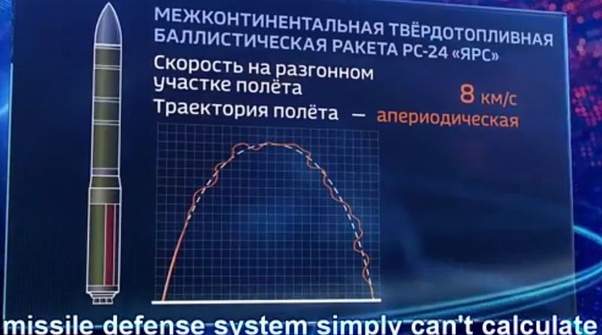
Yars has a between 11,000kms to 12,000kms maneuvers from the start to end phase by not following a traditional ICBM path but controlled thrust vectors which make it easier to use for liquid fuel than solid fuel rockets. Options for warheads are 3-6 MIRVs with 300-500 kiloton warheads or 6 to 9 150 kiloton warheads. Yars-S is a modernization approval over the existing Yars. The missiles also carry targeting countermeasures and decoys, about 136+ mobile versions and 16 silo versions have been made.
Barguzin
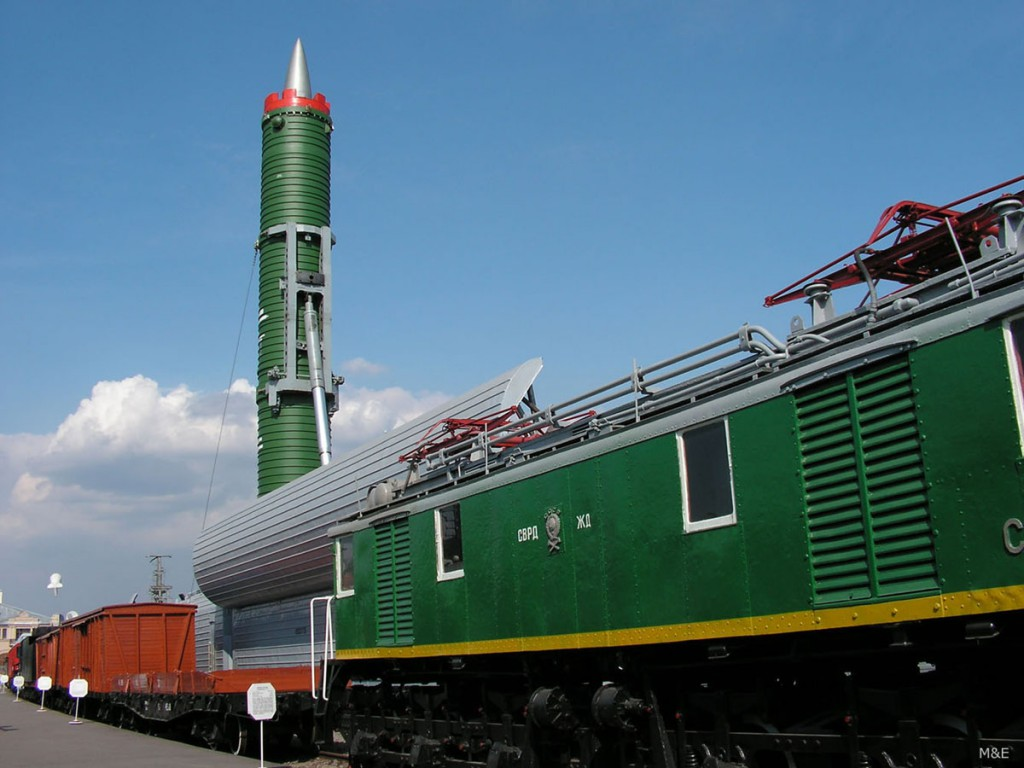
Based on picture the explanation is pretty straight forward, 3 missiles based on the Bulava missile are attached to one of the high-speed train trailers. They will be A.I controlled and choose random different paths, go underground, etc, to throw off adversaries monitoring their weapons via satellite.
Cedar

Yars was a replacement for Topol and Cedar is a replacement for Yars not much is known other than being more advanced than Yars. Creation of missile will begin in 2023-2024.
Sarmat
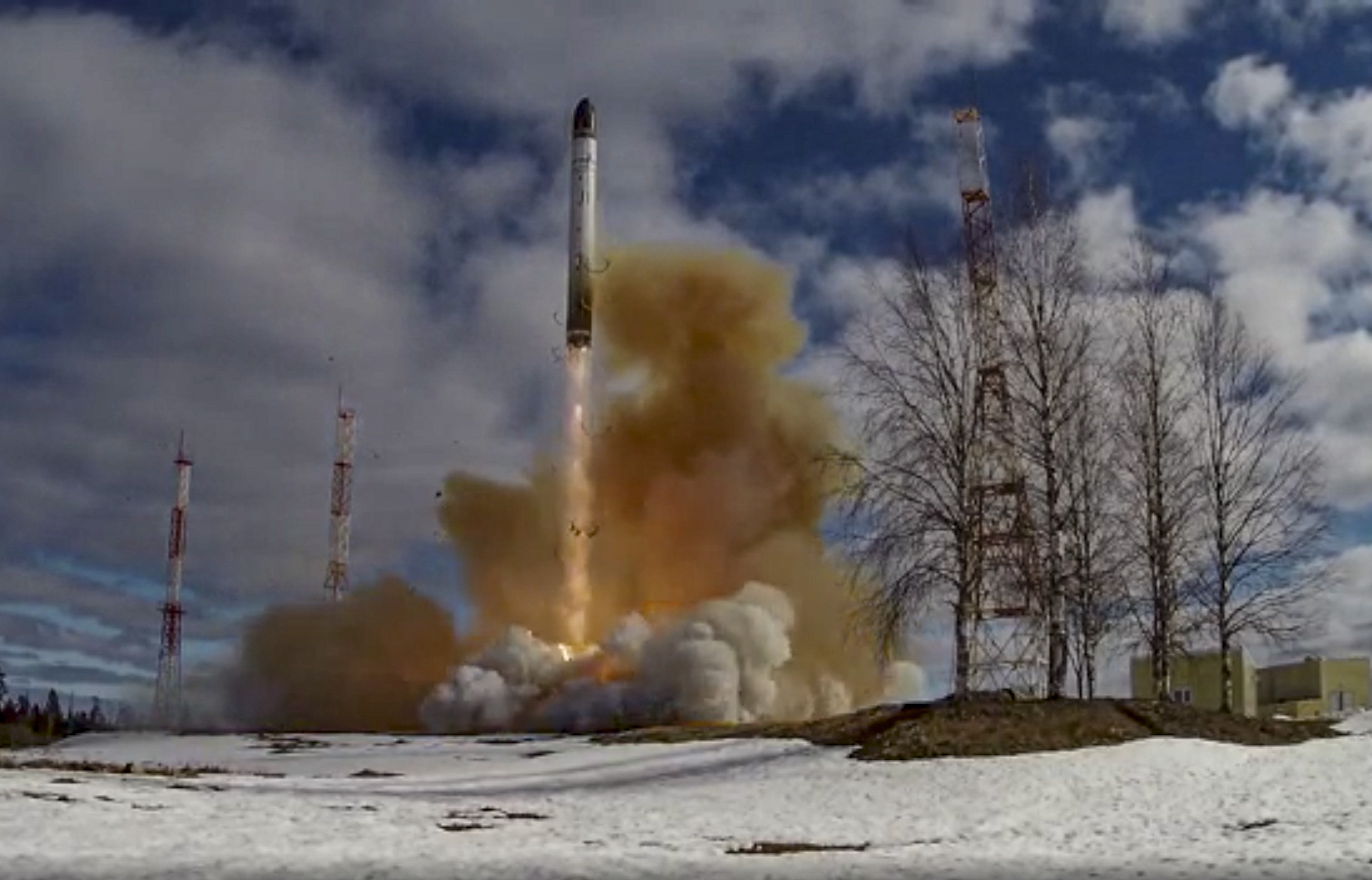
The most powerful nuclear weapon in their arsenal that carries 10-15 MIRVs with unspecified amount of Avangards which I will discuss after this missile, I am assuming the blast yjelds will be equivalent to Satan missile. But as what I would expect the missile has many countermeasures implemented before reaching its target and the 1st is using the Mozyr active protection system around its silos which fire projectiles at a 6km altitude against cruise missiles, bombs, warheads. 2nd what i heard from other sources is that it uses detonation engines which accelerate faster than conventional 1st stage engines used which reduces the tracking time to intercept them. 3rd the 18,000km range allows it to travel or rather fly a trajectory through the south pole which states makes the missile immune from air defenses trying to hit it which I guess is due to powerful X-rays from solar flare radiation from the south pole and has a FOB capability of deploying warheads at low altitudes to travel to its intended targets.
Avangard
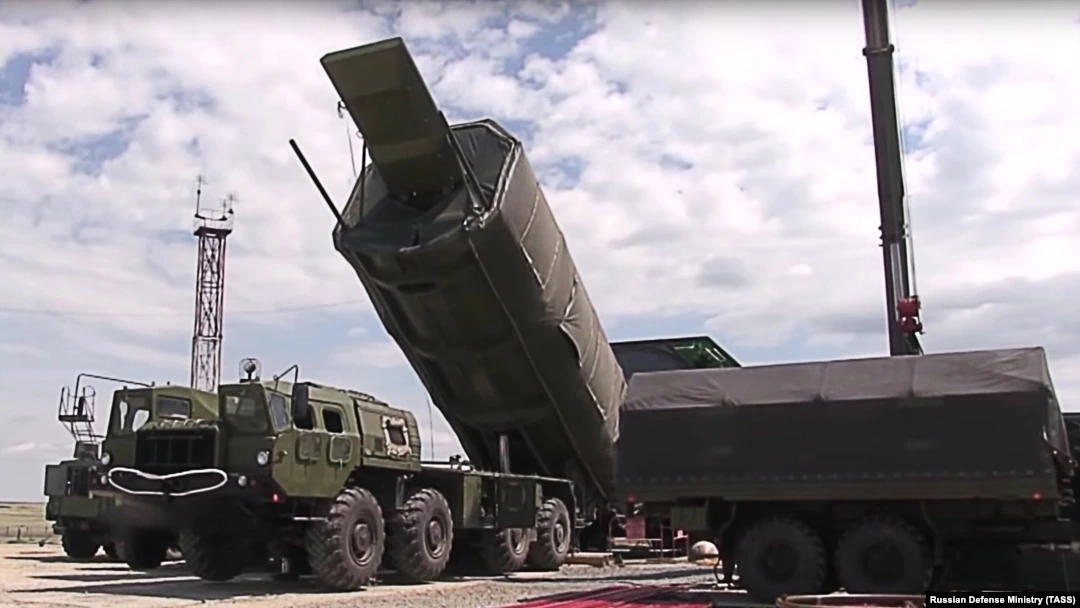
The Avangard is a hypersonic glide vehicle that based on different claims has speeds of mach 20 to mach 27. It gets released at an altitude of 100kms being carried from a missile and makes the rest of its 6000km + range to its target with a 2-megaton payload. So, what makes the HGV difficult to intercept is its lower altitude flight than ballistic missile flight ceilings, maneuverability and speed which I am guessing gives it plasma properties stronger than the Zircon missile giving radars a difficult time to track it. About 8 Avangards are in service but equipped in UR-100 missiles. Russians have created new materials that can burn up to 4200 degrees Celsius which can give them more hypersonic projects to work with on faster speeds and lower altitudes.
Burevestnik
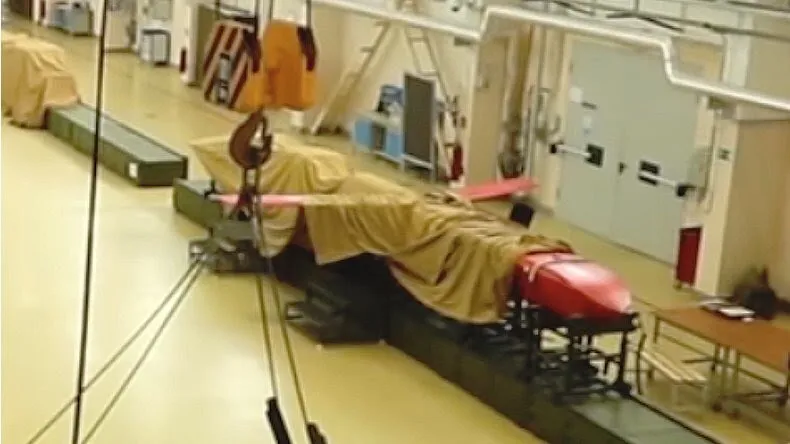
I would like to call this a 3rd strike nuclear weapons because after all the high-speed nuclear missiles are exchanged this subsonic low flying missile will have an unlimited flight range (depending how long miniature nuclear engines last) just looking for survivors and it will be A.I. controlled. It will use radar horizon to fly low and avoid any air defenses assuming if there are any that will still function.
Poseidon
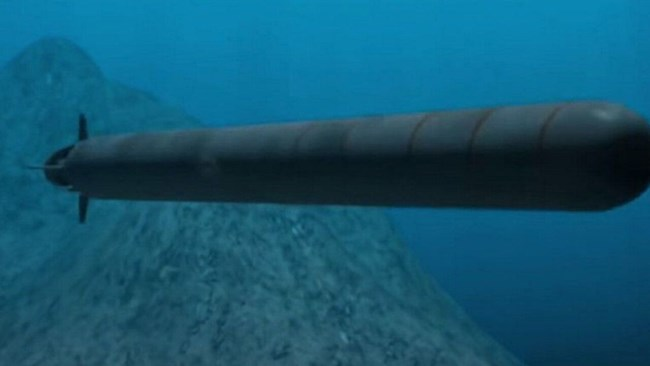
An AI torpedo with a 10,000km range, 1km depth and high-speed underwater nuclear warheads that can be launched from one their submarines like Belgorod to destroy cities either physically by hitting the coasts or according to other arguments and online articles depending on payloads and depths, cause radioactive tsunamis.
This pretty much covers their nuclear weapons and their other nuclear weapons have been discussed earlier in other articles from their navy, army and air force.
References
1. About engines for intercontinental ballistic missiles (topwar.ru)
2.Mike Mihajlovic on Twitter: "The head of Roskosmos, Dmitry Rogozin, announced work in the direction of a new type of ballistic missile from railway platforms. The new missile is based on RSM-56 Bulava submarine-launched missile. https://t.co/syxJKHBiuw" / Twitter
3. 4200 degrees Celsius: Russian scientists have created the most refractory material in the world – RT on Russian
Yars
Yars has a between 11,000kms to 12,000kms maneuvers from the start to end phase by not following a traditional ICBM path but controlled thrust vectors which make it easier to use for liquid fuel than solid fuel rockets. Options for warheads are 3-6 MIRVs with 300-500 kiloton warheads or 6 to 9 150 kiloton warheads. Yars-S is a modernization approval over the existing Yars. The missiles also carry targeting countermeasures and decoys, about 136+ mobile versions and 16 silo versions have been made.
Barguzin
Based on picture the explanation is pretty straight forward, 3 missiles based on the Bulava missile are attached to one of the high-speed train trailers. They will be A.I controlled and choose random different paths, go underground, etc, to throw off adversaries monitoring their weapons via satellite.
Cedar
Yars was a replacement for Topol and Cedar is a replacement for Yars not much is known other than being more advanced than Yars. Creation of missile will begin in 2023-2024.
Sarmat
The most powerful nuclear weapon in their arsenal that carries 10-15 MIRVs with unspecified amount of Avangards which I will discuss after this missile, I am assuming the blast yjelds will be equivalent to Satan missile. But as what I would expect the missile has many countermeasures implemented before reaching its target and the 1st is using the Mozyr active protection system around its silos which fire projectiles at a 6km altitude against cruise missiles, bombs, warheads. 2nd what i heard from other sources is that it uses detonation engines which accelerate faster than conventional 1st stage engines used which reduces the tracking time to intercept them. 3rd the 18,000km range allows it to travel or rather fly a trajectory through the south pole which states makes the missile immune from air defenses trying to hit it which I guess is due to powerful X-rays from solar flare radiation from the south pole and has a FOB capability of deploying warheads at low altitudes to travel to its intended targets.
Avangard
The Avangard is a hypersonic glide vehicle that based on different claims has speeds of mach 20 to mach 27. It gets released at an altitude of 100kms being carried from a missile and makes the rest of its 6000km + range to its target with a 2-megaton payload. So, what makes the HGV difficult to intercept is its lower altitude flight than ballistic missile flight ceilings, maneuverability and speed which I am guessing gives it plasma properties stronger than the Zircon missile giving radars a difficult time to track it. About 8 Avangards are in service but equipped in UR-100 missiles. Russians have created new materials that can burn up to 4200 degrees Celsius which can give them more hypersonic projects to work with on faster speeds and lower altitudes.
Burevestnik
I would like to call this a 3rd strike nuclear weapons because after all the high-speed nuclear missiles are exchanged this subsonic low flying missile will have an unlimited flight range (depending how long miniature nuclear engines last) just looking for survivors and it will be A.I. controlled. It will use radar horizon to fly low and avoid any air defenses assuming if there are any that will still function.
Poseidon
An AI torpedo with a 10,000km range, 1km depth and high-speed underwater nuclear warheads that can be launched from one their submarines like Belgorod to destroy cities either physically by hitting the coasts or according to other arguments and online articles depending on payloads and depths, cause radioactive tsunamis.
This pretty much covers their nuclear weapons and their other nuclear weapons have been discussed earlier in other articles from their navy, army and air force.
References
1. About engines for intercontinental ballistic missiles (topwar.ru)
2.Mike Mihajlovic on Twitter: "The head of Roskosmos, Dmitry Rogozin, announced work in the direction of a new type of ballistic missile from railway platforms. The new missile is based on RSM-56 Bulava submarine-launched missile. https://t.co/syxJKHBiuw" / Twitter
3. 4200 degrees Celsius: Russian scientists have created the most refractory material in the world – RT on Russian





